The Samsung QN92/QN90 is a premium device that will satisfy even the most demanding users. Thanks to MiniLED technology, the television offers excellent contrast and high brightness, making movie watching an experience reminiscent of a trip to the cinema. The Tizen system ensures quick and intuitive use, significantly enhancing everyday usage. Users looking for traditional broadcasting will not be disappointed — the QN92/QN90 stands out with superb processing capability for lower-quality materials, translating to better visual experiences. The Solar Remote is an innovative addition that can take control of other devices, such as a satellite decoder, eliminating the need for multiple remotes. Notably, the 144 Hz panel provides exceptionally smooth motion, an essential feature for gamers. Additional gaming features like low input lag and the game bar make the QN92/QN90 an ideal choice for gaming enthusiasts. An additional advantage is the Auto Motion Plus Game feature, which increases image smoothness without a significant rise in input lag, making 30 frames look like 45, and 60 Hz like 90 Hz. This solution allows gamers to enjoy smoother motion without sacrificing gameplay comfort. With high brightness, multiple dimming zones, and MiniLED (Neo QLED) technology, the QN92/QN90 delivers stunning visuals during the day and at night, though slight halo effects may occasionally appear. Wide viewing angles make it a great choice for large living rooms, and the colours, supported by QLED coating, are vibrant and juicy. After additional calibration, the television presents even better quality, making its use a truly pleasant experience.
- Matching (Score)
- Our verdict
- TV appearance
- Where to buy
- Contrast and black detail
- HDR effect quality
- Factory color reproduction
- Color reproduction after calibration
- Smoothness of tonal transitions
- Image scaling and smoothness of tonal transitions
- Blur and motion smoothness
- Console compatibility and gaming features
- Input lag
- Compatibility with PC
- Viewing angles
- TV efficiency during daytime
- Details about the matrix
- TV features
- Apps
- Playing files from USB
- Sound
Samsung Neo QLED QN90D / QN92D vs Samsung QN90F / QN92F
Direct compare
Check the best price offer:
Samsung Neo QLED QN90D / QN92DCheck the best price offer:
Samsung QN90F / QN92FNeo QLED / QN92D / QN90D

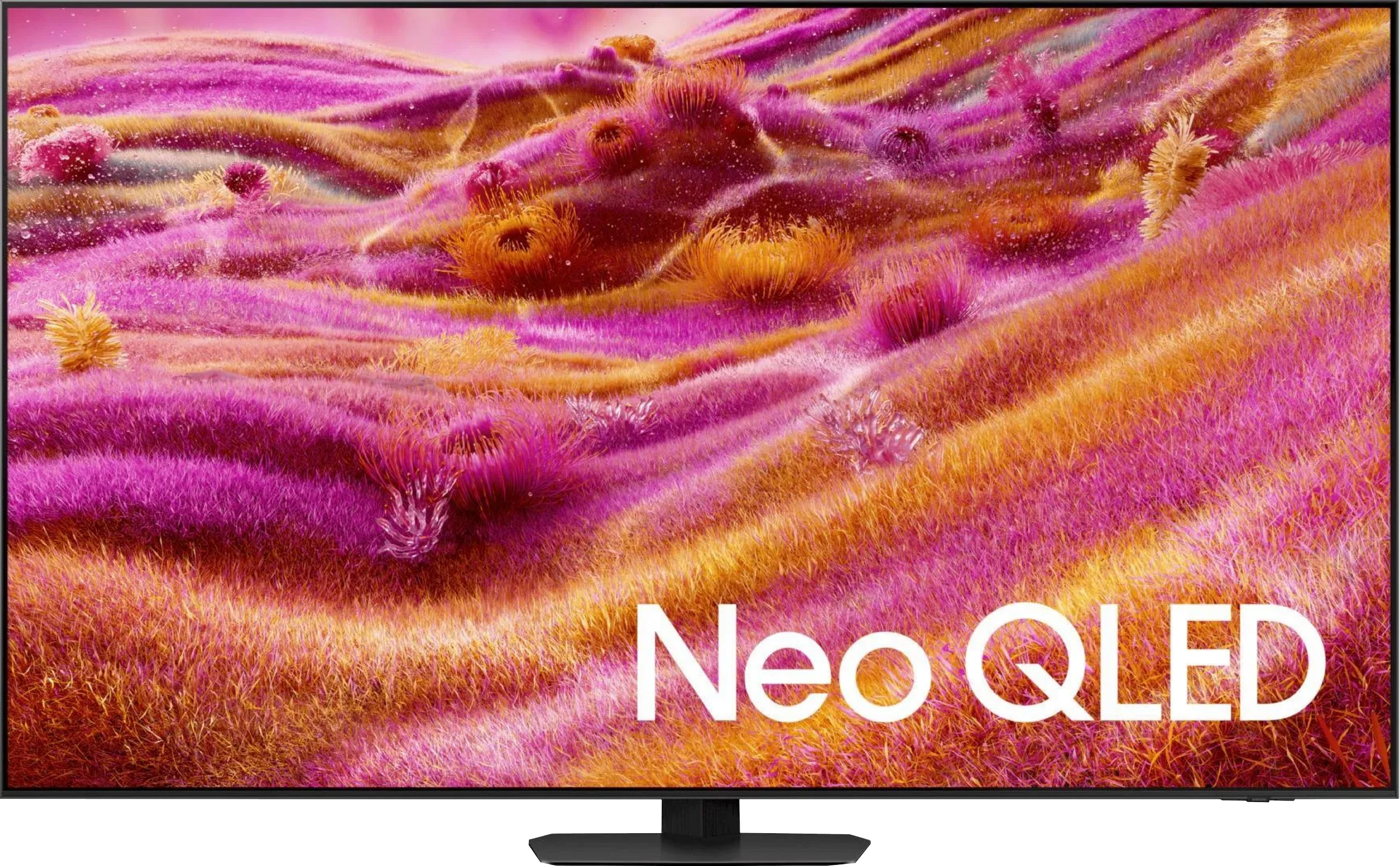
Panel type: LCD VA (wide viewing angle)
Resolution: 3840x2160
System: Tizen
Model year: 2024
Complete the survey to find out the result

Panel type: LCD VA
Resolution: 3840x2160
System: Tizen
Model year: 2025
Complete the survey to find out the result

Overall rating
7.8
7.8
Movies and series in UHD quality
7.9
7.8
Classic TV, YouTube
7.9
7.6
Sports broadcasts (TV and apps)
7.7
7.2
Gaming on console
9.1
8.8
TV as a computer monitor
8.6
8.8
Watching in bright light
6.4
7.2
Utility functions
7.4
7.7
Apps
8.7
8.7
Sound quality
6.9
7.8
Complete the survey to find out what fits your preferences
Advantages
High brightness
Good contrast
Intuitive Tizen operating system
Great for gamers and sports fans (HDMI 2.1, 144Hz, low input lag)
Wide viewing angles - unusual for VA panels
Very good contrast and black levels
Amazing HDR brightness in movies
Very good TV performance during the day thanks to the matte panel and high brightness
High motion fluidity – up to 165 Hz in PC mode
Low input lag
A lot of features for gamers, including the proprietary motion smoother Game Motion Plus
High susceptibility to image calibration
Fluid Tizen operating system with smart home (IoT) features
Pleasant sound with noticeable bass despite the slim design
Modern design
Disadvantages
No recording feature
No DTS format support - this may be problematic for Blu-ray users
Worse viewing angles compared to the predecessor QN90D.
No DTS sound for Blu-ray home theaters
No HGiG* function
*We hope this issue will be resolved quickly. We are monitoring the situation closely.
Our verdict
The Samsung QN90F is a television that, in many ways, demonstrates how mature the development of miniLED technology can be. It offers excellent contrast and blacks, very high HDR brightness that works well in both movies and games, and a matte screen that makes a huge difference in everyday use. This is what makes the QN90F one of the best televisions for watching in sunny living rooms – reflections and glare virtually disappear, and the image remains sharp and clear. Gamers, on the other hand, get a package of all the essential features, very low input lag, and a unique Game Motion Plus mode, which remains a strong advantage for Samsung over the competition. Additionally, there's a fast Tizen system, high-level smart features, and quite pleasant sound that can be enhanced with a soundbar in the Q-Symphony setup. However, there were some compromises. Samsung decided to forgo a coating that expands viewing angles – and while the matte screen performs excellently during the day, a noticeable drop in brightness and loss of color intensity can be seen at greater angles. It's also unfortunate that support for HGiG disappeared with the software updates, which can be a significant downside for demanding gamers. Despite these remarks, the QN90F is still one of the best, if not the best, 4K miniLED televisions currently available. It’s a model that combines excellent picture parameters, high functionality, and modern design, while being exceptionally practical for daily use. If someone is looking for a TV for a bright living room that can handle movies, sports, and games equally well – it's hard to find a better choice today.
TV appearance





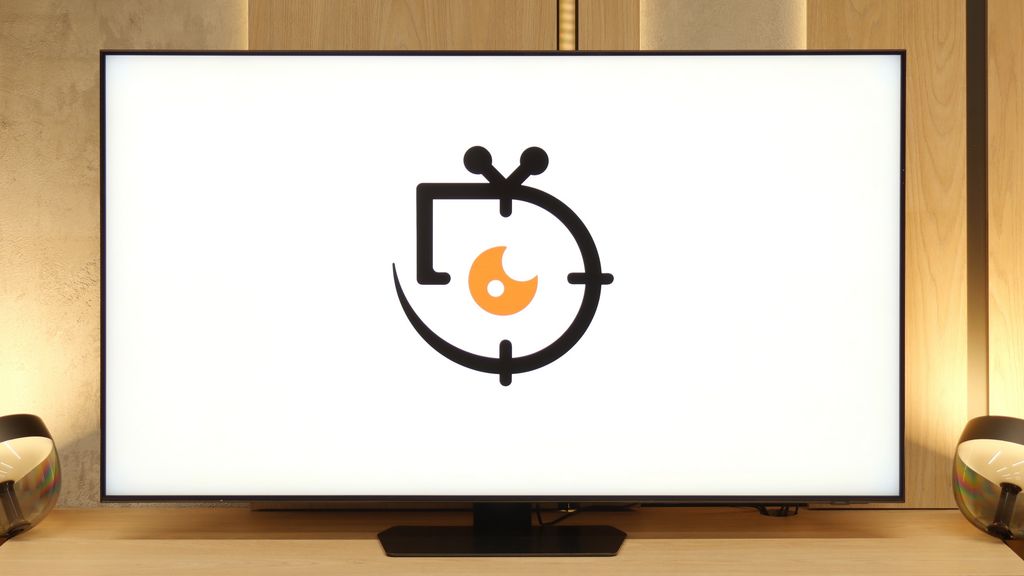
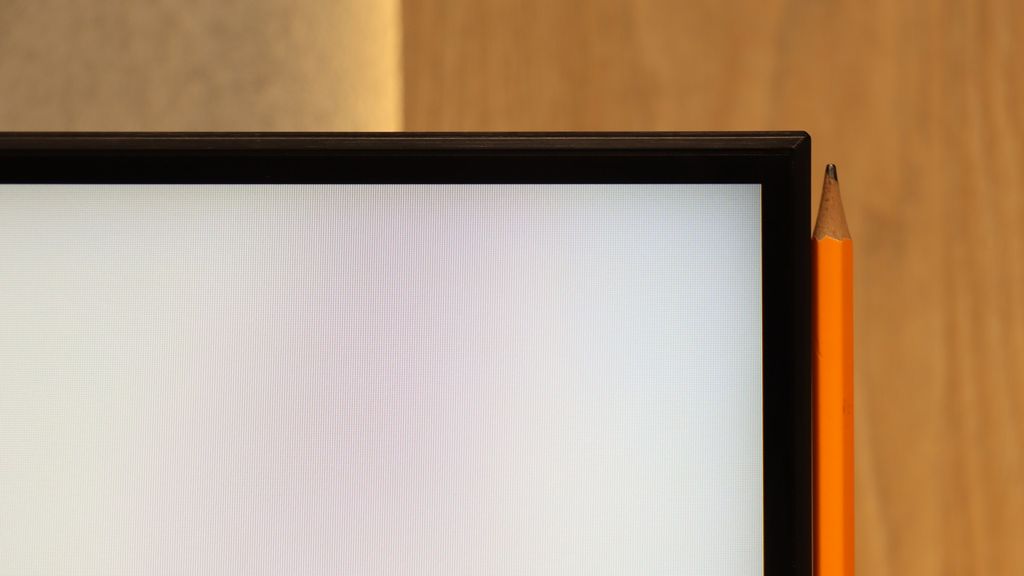
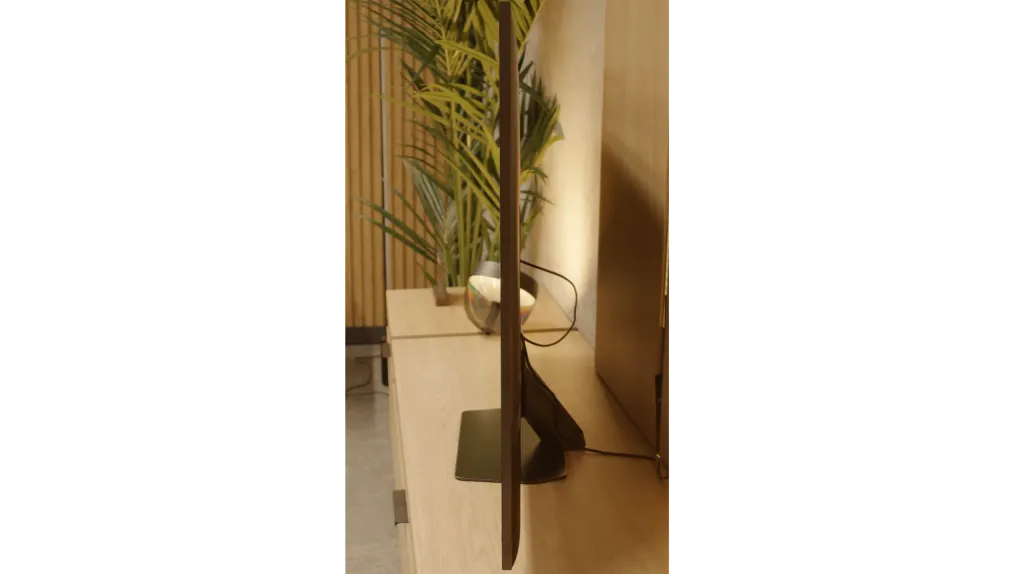
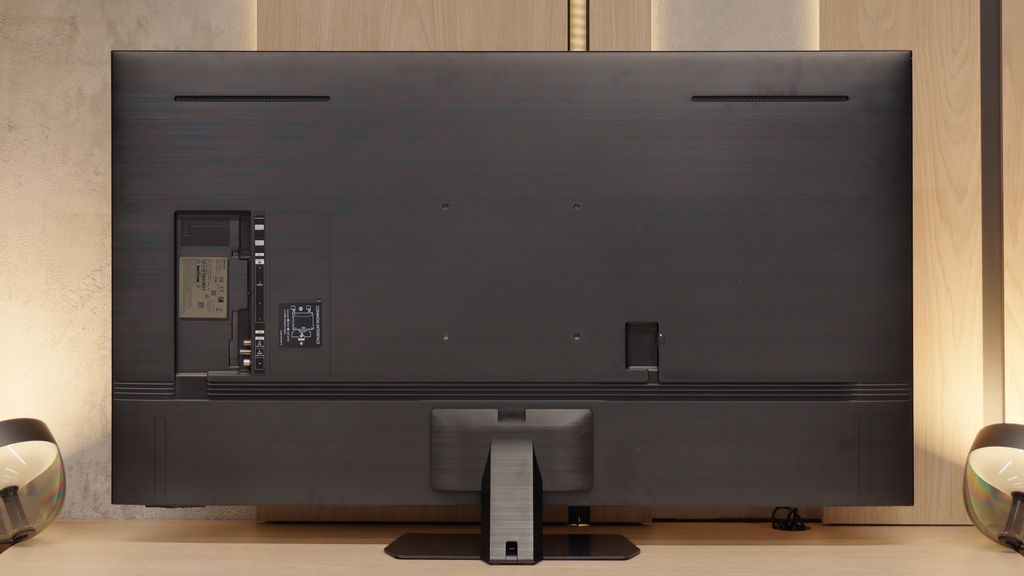
Contrast and black detail
7.9/10
8/10
Local dimming function: Yes, number of zones: 504 (36 x 14)
Local dimming function: Yes, number of zones: 504 (14 x 36)
Contrast:

Result
∞:1

Result
69,000:1

Result
∞:1

Result
5,500:1

Result
2,700:1

Result
1,530,000:1

Result
62,450:1

Result
186,400:1

Result
7,400:1

Result
4,500:1
Halo effect and black detail visibility:

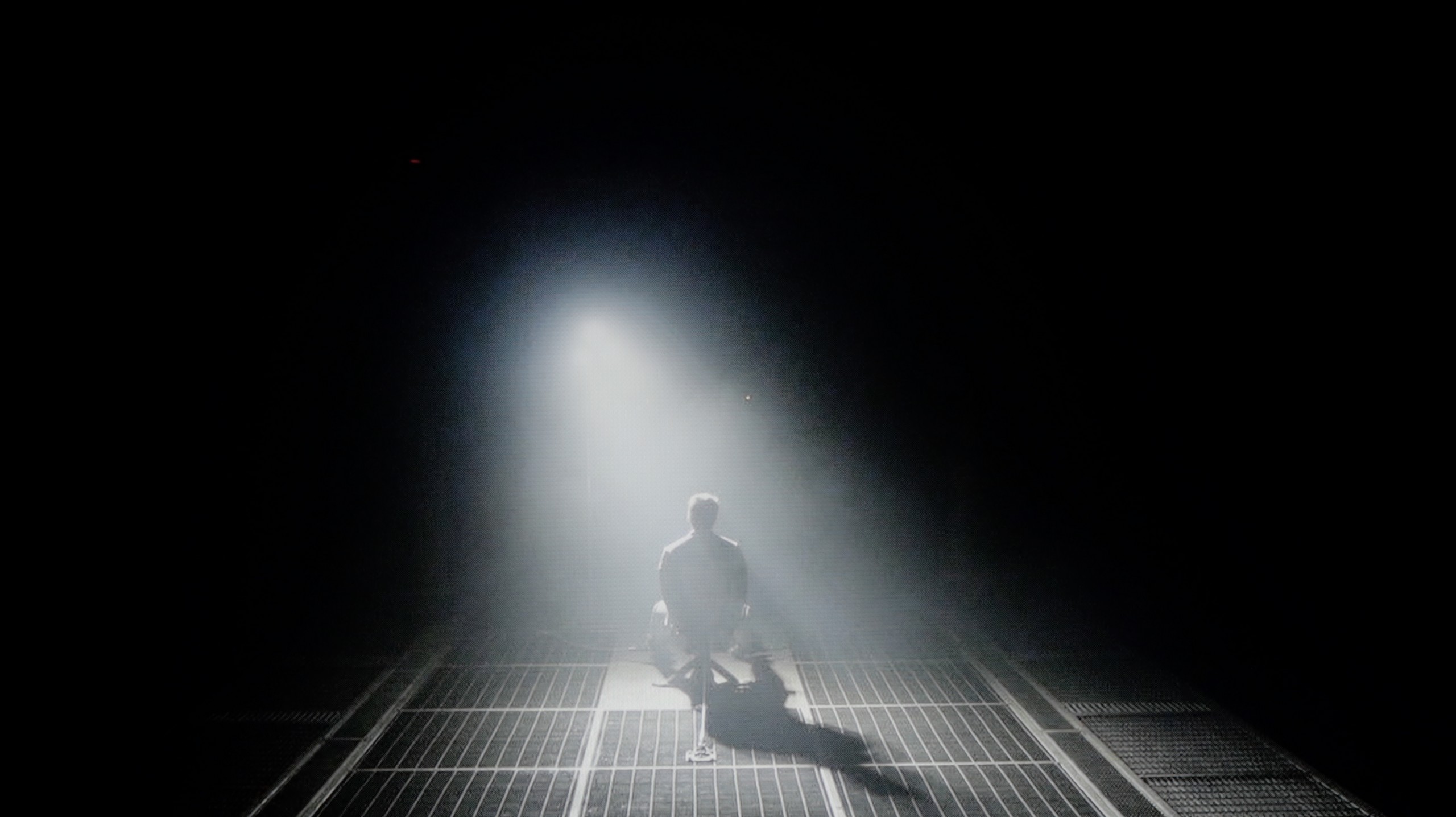
The Samsung QN92D ranks among the top models in the 2024 NeoQLED 4K (Mini LED) line from the Korean manufacturer. Although it doesn't feature as many dimming zones as its more advanced sibling, it still impresses with 504 zones in the 55-inch version. Paired with a VA panel, this setup delivers excellent contrast, making the QN92D stand out in the non-OLED category. Even in challenging scenes, such as those in Oblivion or Arrival, its near-infinite contrast can rival some of the best OLED TVs—an uncommon feat for LED-backlit displays.
However, Mini LED technology does come with limitations compared to OLED. For instance, the TV struggles with certain test patterns, likely due to its aggressive dimming algorithm. This occasionally causes the Mini LEDs to misjudge whether to highlight specific elements or maintain deeper black levels. Despite these minor drawbacks, the Samsung QN92D remains one of the top LCD TVs for contrast and black-level performance.
If we compare the contrast results of this year's QN90F with last year's QN90D, it quickly becomes clear that the differences are minimal. In the best movie scenes, the contrast can reach values well above six digits, and sometimes even seven digits, which can be confidently considered as results nearly infinite. And indeed – in typical cinematic shots, the effect closely resembles that known from OLED TVs. Samsung deserves praise because despite a relatively "modest" number of dimming zones – 504 in the 55-inch variant (modest compared to Chinese competitors like Hisense U8Q or TCL C8K/C9K) – they managed to refine the local dimming algorithms. This is particularly noticeable in the most challenging scenes, where, compared to last year's model, the precision of dimming has nearly doubled. Of course, we still don't have perfectly separated bright objects from blacks, and we cannot speak of the absence of halo effects (slight glows around small bright objects) known from MINI-LED TVs, so QN90F still doesn't win against OLEDs. But it is definitely approaching them in a more mature and refined way than a year earlier.
HDR effect quality
6.7/10
7.4/10
Luminance measurements in HDR:

Result
1947 nit

Result
617 nit

Result
738 nit

Result
271 nit

Result
1479 nit

Result
1638 nit

Result
763 nit

Result
1119 nit

Result
562 nit

Result
1947 nit
Scene from the movie “Pan” (about 2800 nits)


Scene from the movie “Billy Lynn” (about 1100 nits)


Static HDR10


Dynamic: HDR10+
Dynamic: HDR10+


HDR luminance chart:
Samsung QN90F / QN92F
HDR luminance
Samsung Neo QLED QN90D / QN92D
HDR luminance
During synthetic tests, the Samsung QN92D demonstrated remarkable brightness capabilities, reaching an impressive 2000 nits—on par with top models in the market. This level of brightness puts it at the forefront for displaying HDR content, where high brightness is essential. But how does it fare in real movie scenes? Under favourable conditions, such as the light-drenched opening and closing scenes of Life of Pi, the QN92D nearly replicates its lab results, delivering striking brightness levels. However, performance changes in scenes featuring small, bright objects against dark backgrounds, such as the fourth scene in Sicario. Here, brightness levels drop significantly, with maximum values capping at around 600 nits.
As with contrast, these limitations are due to the aggressive local dimming algorithm, which aims to reduce the "halo" effect around bright objects in dark scenes but often sacrifices overall brightness. Consequently, while the TV excels in scenes with abundant light, it faces challenges maintaining brightness with smaller, bright elements on dark backgrounds.
The Samsung QN90F can truly shine in brightness. In our measurements, it achieved over 2200 nits, which directly translates to the viewing experience. Practically, this means that when a very bright scene appears in a movie – for example, the sunrise in The Meg – the screen looks as if natural light is actually shining on us. This isn’t just a number from a chart, but a real sense of image intensity! However, the TV cannot always deliver that full power. With smaller details, such as headlights or lamps, the brightness drops to 500–700 nits. This is a conscious decision by the algorithms – this way, the contrast between large and small elements is better controlled, and the image does not lose balance. Importantly, this is still a huge improvement compared to last year's QN90D, where similar details were almost invisible, shining at just 200 nits. Here, the HDR effect is much more consistent and credible. The only downside is the colors. The coverage of the DCI-P3 palette stopped at 91%, which can be considered a rather average result in this price range.
Factory color reproduction
6.1/10
5/10


Factory Mode
After calibration
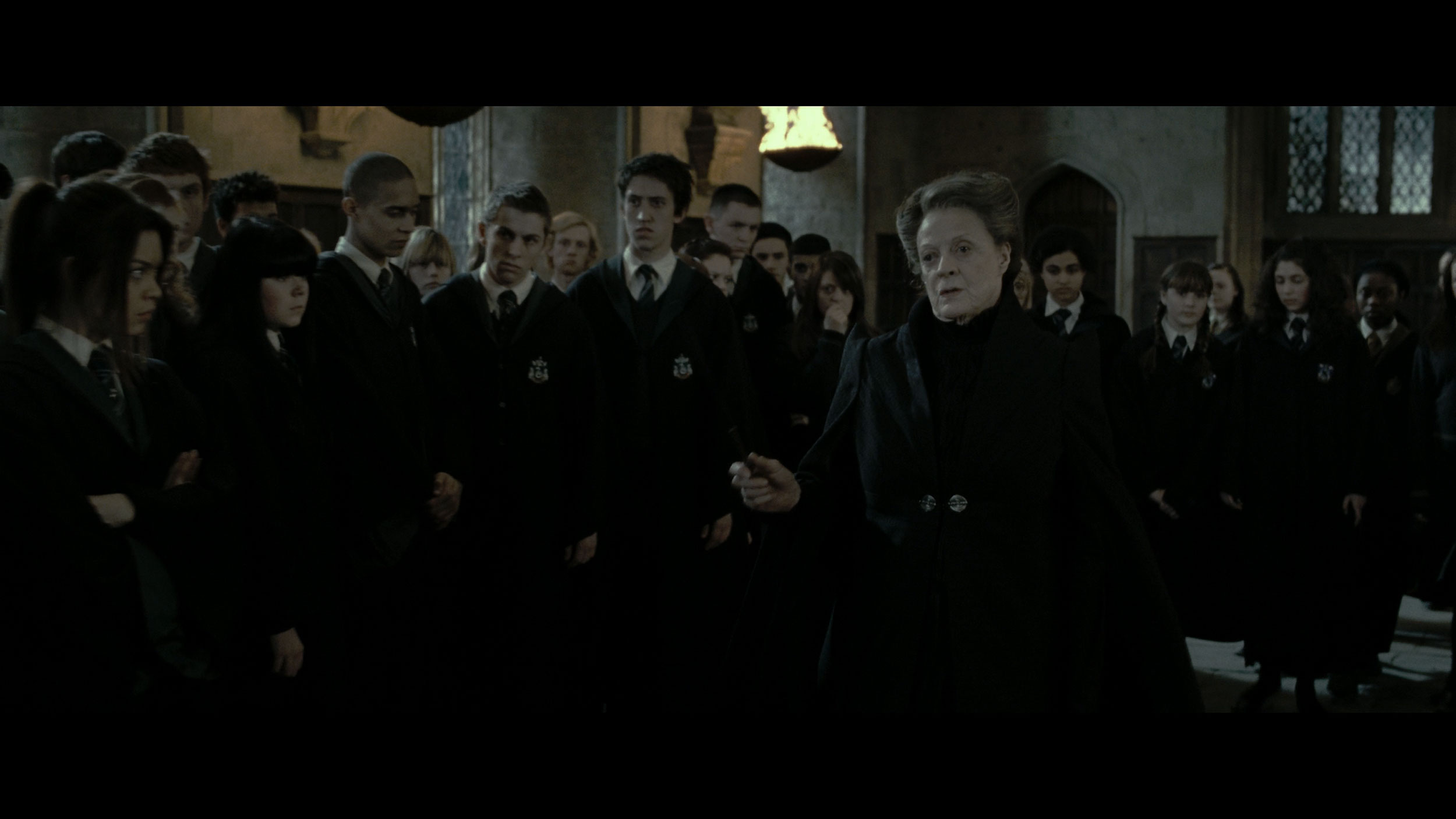
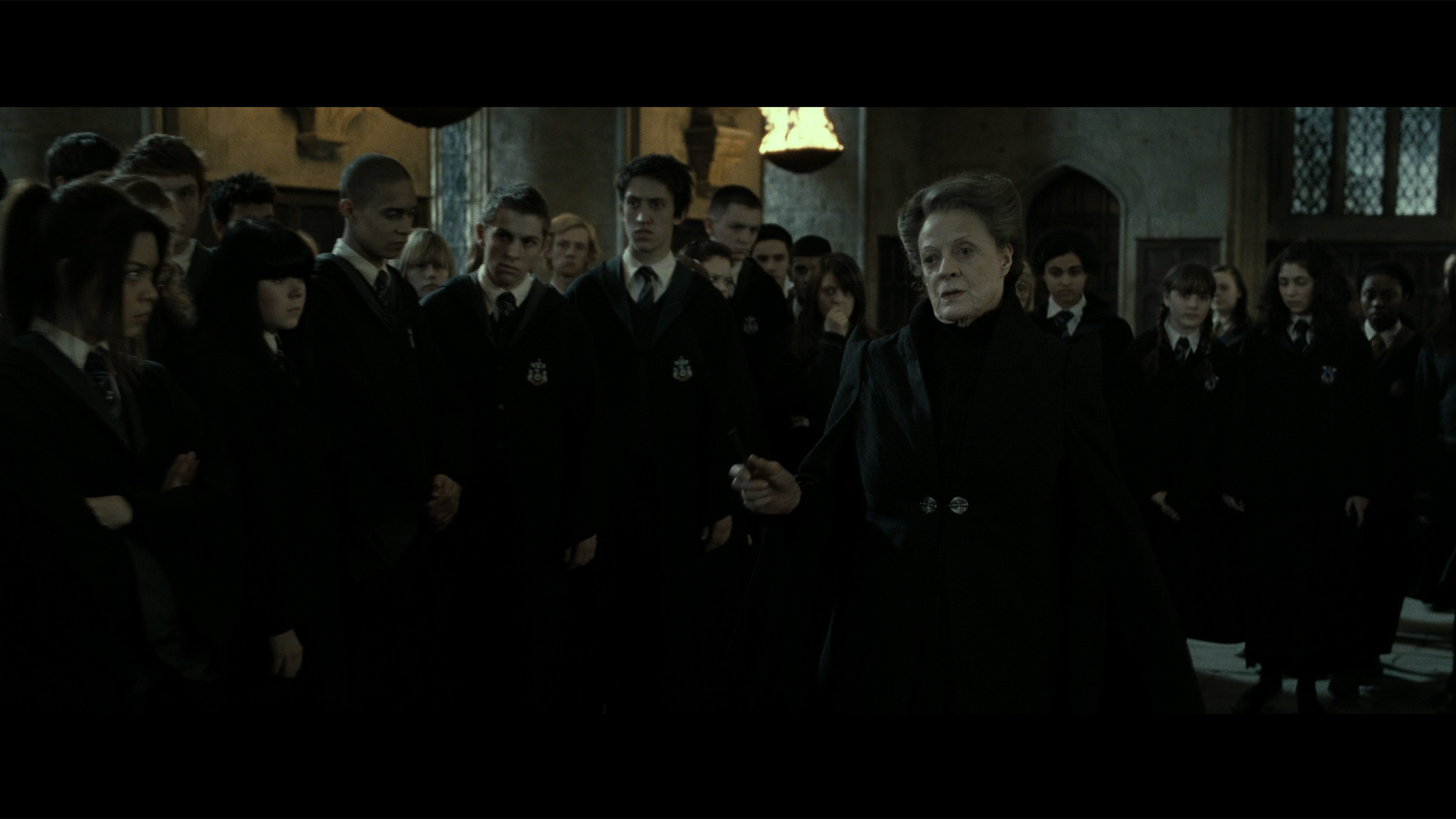
Factory Mode
After calibration
The best mode for colour reproduction on the Samsung QN92D is Filmmaker mode. Although it generally offers good colour quality, it is not without significant issues. Starting with HD/SDR image quality, the main challenge is white balance. The graphs reveal considerable instability, with a dominant red tint that makes the image appear too warm. This imbalance causes shades to shift unnaturally towards warmer tones, potentially affecting the perception of natural colours. Additionally, while contrast, as indicated by the gamma chart, is not the worst, it still falls short of the ideal, impacting overall image quality, especially in darker scenes.
This issue continues with 4K content, such as high-quality series or films. Here too, white balance proves problematic, with noticeable deficiencies in both blue and red, leading to tonal shifts. Tests using the Colour Checker tool confirm these issues, showing a tendency for colours to skew toward yellow hues, further distorting the natural look of the image. While Filmmaker mode remains one of the best options for cinematic content, it could still benefit from improvements, particularly in colour accuracy and white balance.
We tested color reproduction in the QN90F in Filmmaker mode, and as usual with Samsung TVs, this mode proves to be the best starting point right out of the box. However, this does not mean that the image is free from flaws. The white balance in SDR and HDR content was surprisingly good – the colors didn’t shift in any direction, and even in the factory setting, it looked solid. However, a problem arose with the gamma and EOTF curves, which are responsible for how the TV manages brightness. Here, the QN90F significantly brightened the entire image, causing black levels and colors to lose their intensity, and the overall effect resembled a milky filter being applied. Fortunately, Samsung, unlike many competitors in the miniLED world, provides users with a lot of tools to control the settings that we don’t find with other manufacturers, such as Chinese brands. Therefore, we decided to check if it was possible to extract the full potential of the QN90F because we know that such a high series can deliver much more.
Color reproduction after calibration
8.7/10
9/10




After calibration, the Filmmaker mode on the Samsung QN92D shows significant improvement, particularly with SDR content. The white balance has been greatly enhanced — previous colour shifts and red dominance have been corrected, resulting in more natural colour reproduction. Although the gamma curve didn’t require major adjustments, its stabilisation has positively impacted overall picture quality.
In high-quality materials, the white balance has also improved. However, contrast remains an area to watch. The EOTF curve initially appears accurate, but closer inspection reveals that the television struggles to maintain consistent contrast in film content, indicating further room for improvement. Despite these areas, one advantage is the TV’s colour saturation. Skin tones are rendered well, and while some colours may be slightly oversaturated, the overall effect is rich and vibrant.
Despite minor contrast limitations, the calibrated Filmmaker mode on the Samsung QN92D delivers excellent picture quality, with natural colours, making it a strong choice for movie watching.
After our adjustment of the settings, the QN90F showed what it is really capable of – and it must be admitted that it has one of the best images we have seen on a miniLED screen this year. As we mentioned earlier, the white balance was not a major issue even in its factory version, but only after the gamma calibration were we able to get close to nearly reference values. The same is true for HDR content, where the EOTF curve after correction presents mature and consistent results. Indeed, in some films, it can be noticed that the smallest elements of the image are slightly brightened, and with a limited number of dimming zones, there is still a risk of the halo effect. It should be remembered, however, that such phenomena are characteristic of all miniLED televisions, and it's hard to expect miracles even from the QN90F. The most important thing is that after calibration, the television shows an image that, in terms of conveying the director's vision, confidently competes even with many OLED screens available on the market.
Smoothness of tonal transitions
9/10
8.9/10

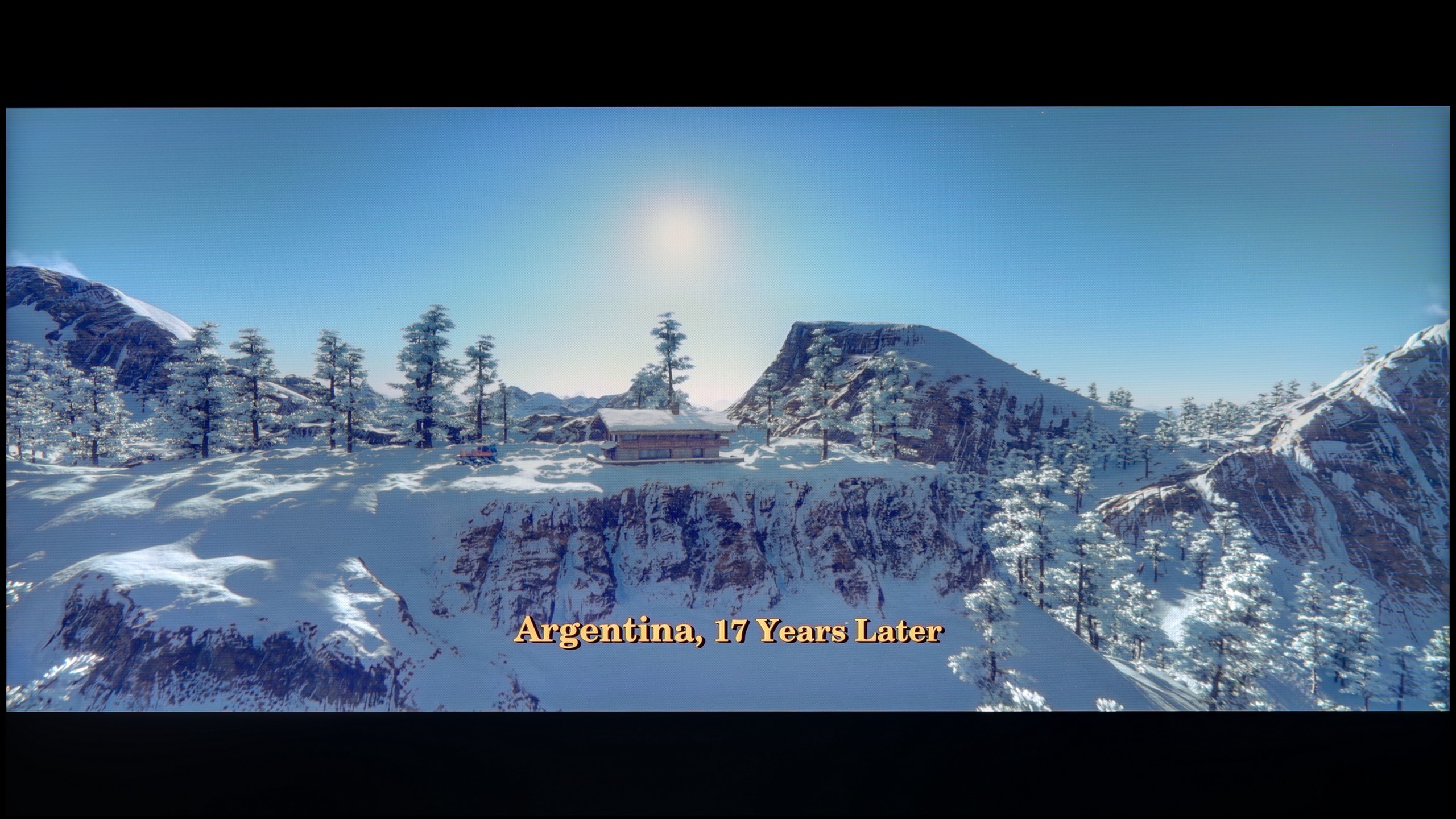



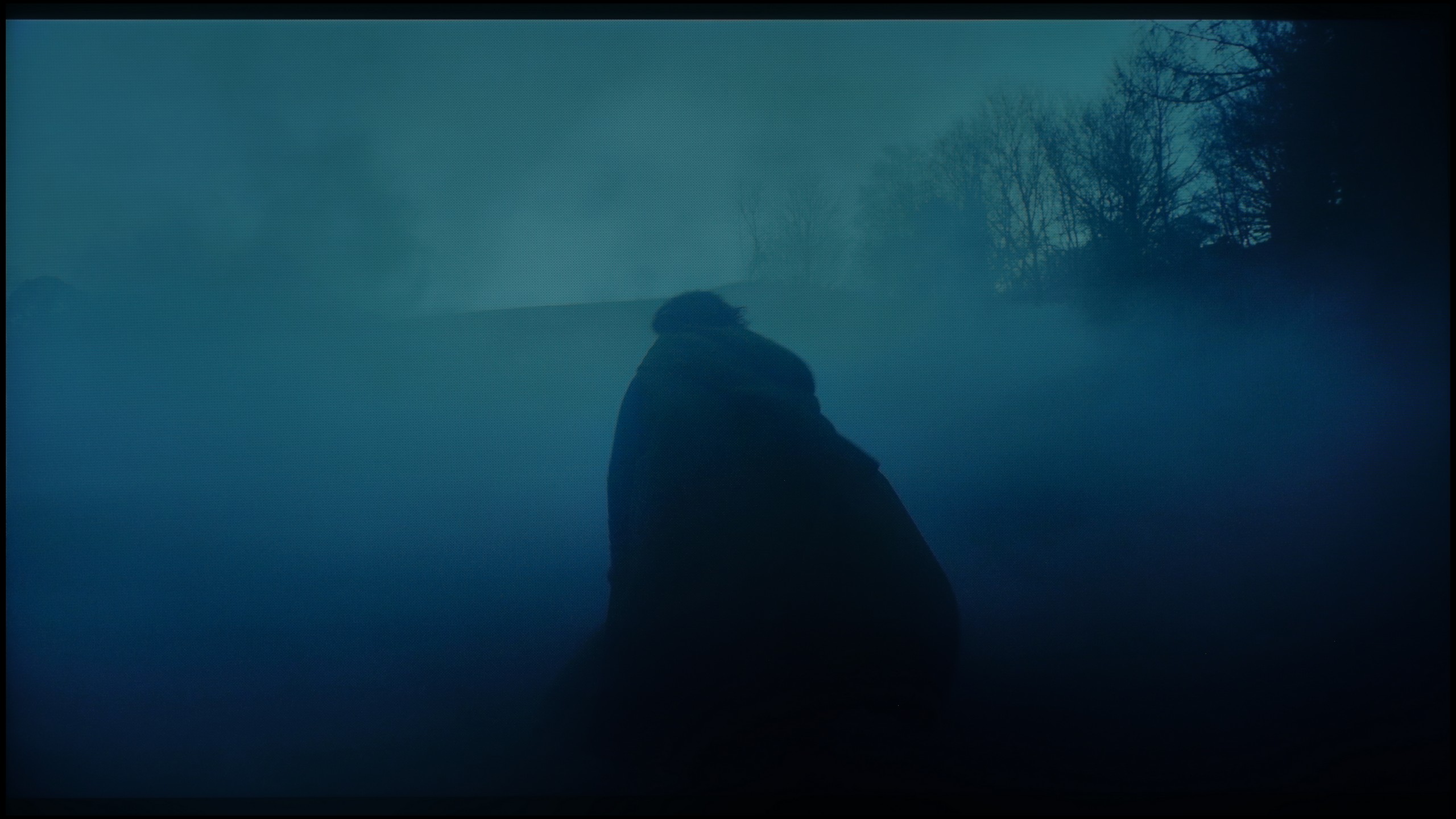






The Samsung QN92D television excels in the fluidity of tonal transitions, giving the image a remarkably natural appearance without visible artefacts. It performs exceptionally well in scenes with complex colour gradations, delivering smooth and uniform transitions. Competing OLED televisions in a similar price range could take note, as the Samsung QN92D provides a quality that rivals even models equipped with QD-OLED panels.
The tonal transitions in the QN90F are at a very good level. Regardless of the scene being tested, it was difficult to spot clear problems with color blending or visible banding. Even in demanding segments, such as the scene from the movie Green Knight, where the actor immerses himself in red water, the image appeared smooth and natural. Indeed, with careful watching, one can notice minor micro-blemishes – for example, in the grays or in very bright shots – but they do not affect the overall perception. The television performs well enough that most viewers will not notice these imperfections.
Image scaling and smoothness of tonal transitions
7.2/10
7.5/10
Smooth transition function

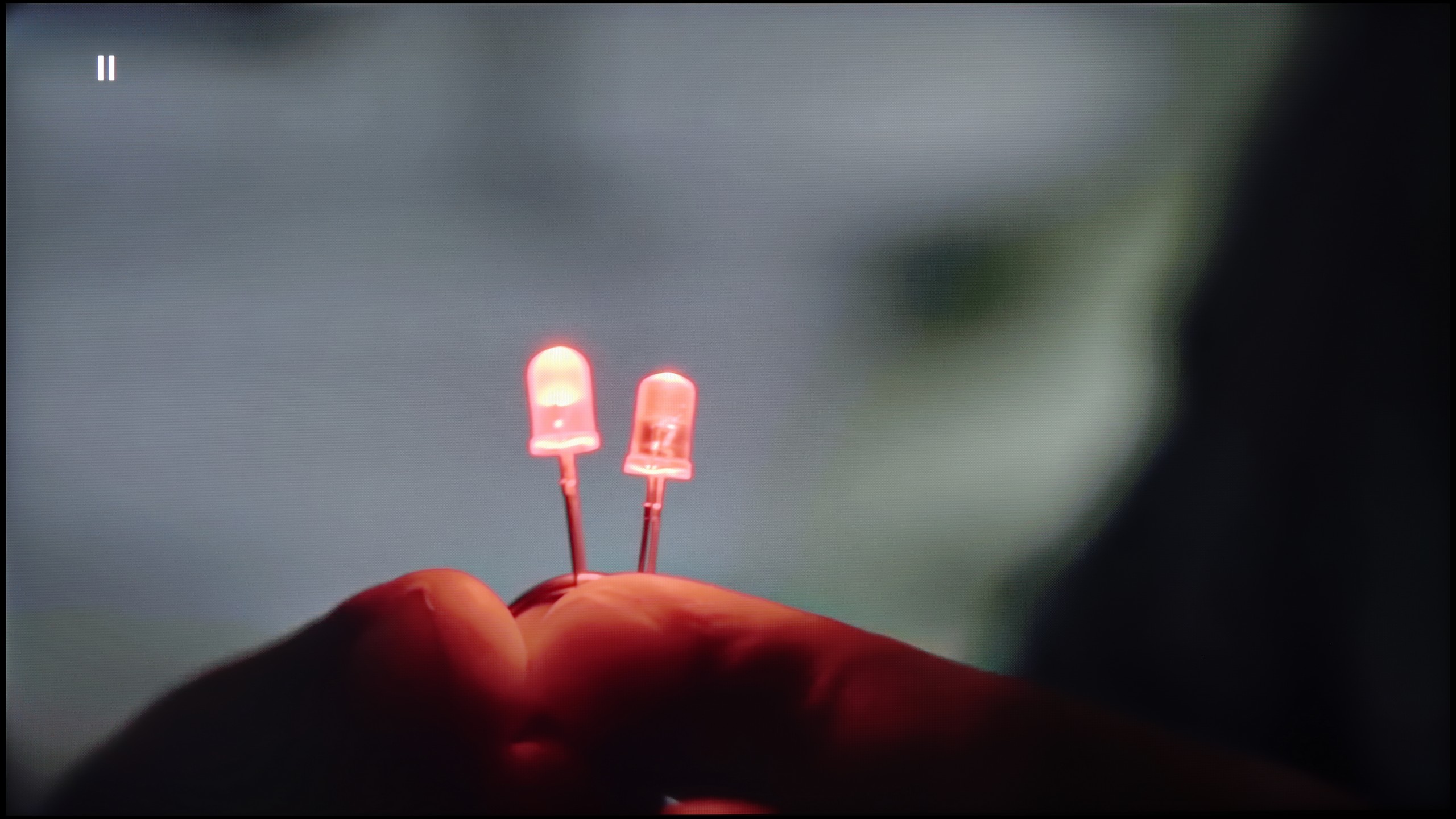
Image without overscan on the SD signal


Let's examine how the Samsung QN92D television manages tonal transitions in low-quality materials. The noise reduction function is highly effective, enhancing the fluidity of tonal transitions even under challenging conditions. However, it’s worth noting that, as with other Samsung televisions, this feature can occasionally remove desirable elements, such as film grain, which may affect image authenticity.
In terms of digital processing, the Samsung QN92D also performs impressively. During testing, the image appeared natural and well-balanced, with details like background branches precisely reproduced, underscoring the television’s ability to enhance the quality of low-resolution materials.
QN90F handles upscaling very well. Materials in lower resolution, even SD, are boosted to a clear and sharp image, showcasing plenty of details in the background. This is a significant advantage because the television makes older content or everyday TV look much better than on most budget screens. However, the issue of overscan remains, which is the trimming of the edges of the screen that cannot be turned off in Samsungs. This can cause some subtitles on the screen to disappear or a relative's face from a wedding on a VHS tape to be slightly cropped. 😉
The digital image processing also works well. In the menu, we find a feature called "noise reduction," which can smooth out tonal transitions and improve the reception of lower-quality materials, such as from YouTube. In medium setting, the effect is the most beneficial – it does not heavily interfere with details while eliminating the "stair-stepping" problem in colors. However, it is important to remember that the feature can be quite aggressive and can also remove natural grain in older films, so it's best to use it in moderation.
Blur and motion smoothness
7.5/10
7.5/10

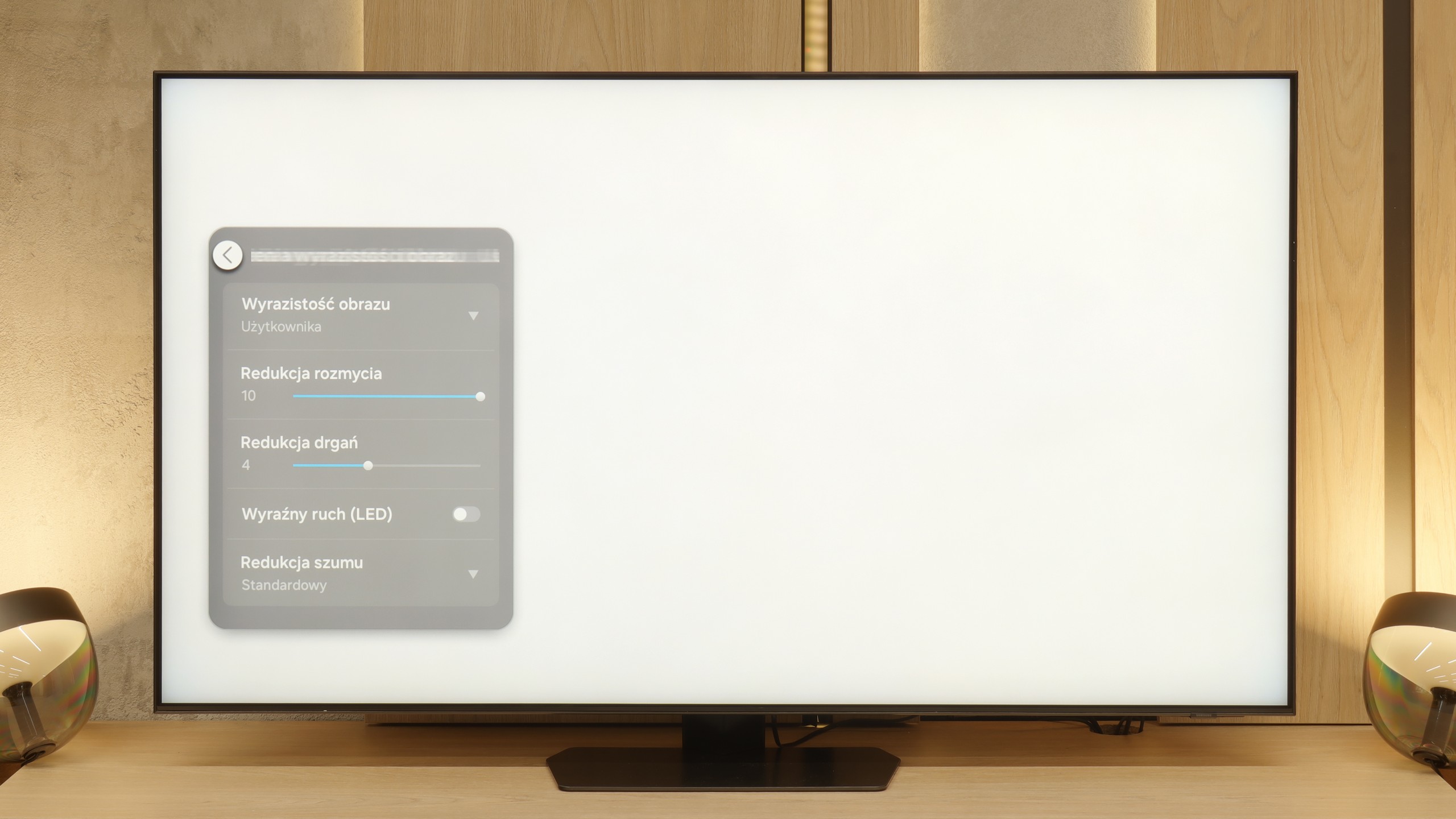
Blur (native resolution, maximum refresh rate):




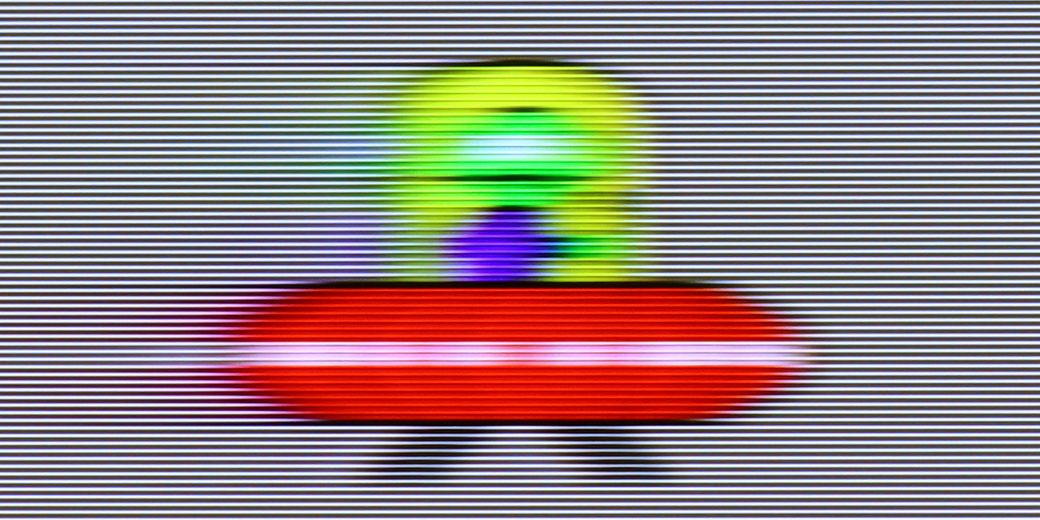
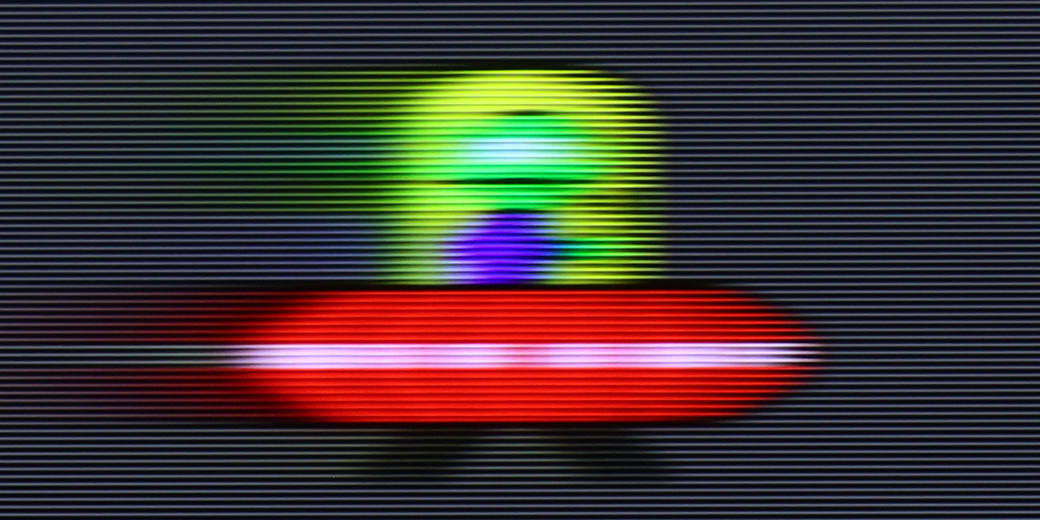
Blur (BFI function enabled):
Image flickers in this mode



Image flickers in this mode



Smużenie ():
Smużenie (4K@165Hz):


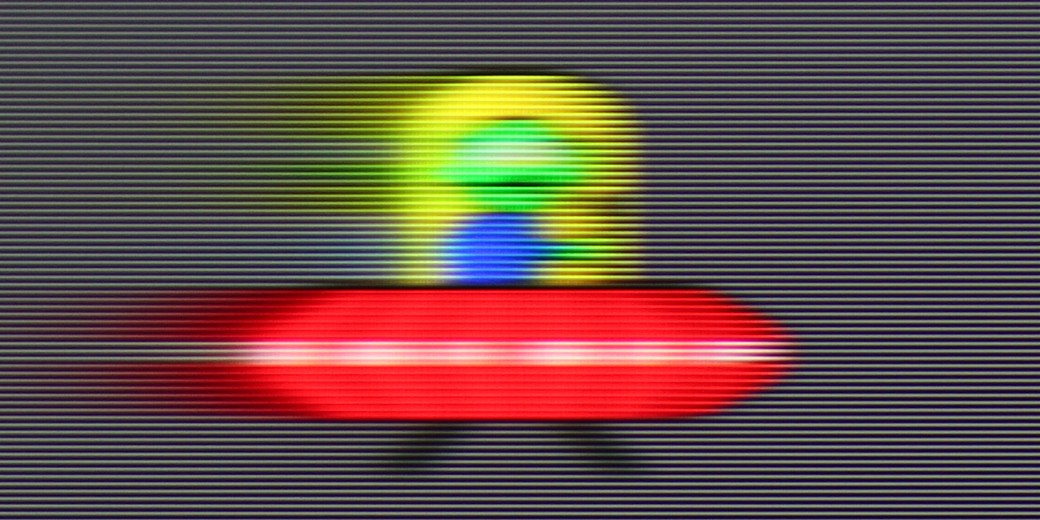
The Samsung QN92D TV features a 144 Hz panel, however, when using the motion smoother, the maximum refresh rate adjusts to 120 Hz. This setup ensures excellent picture quality for both gamers and sports enthusiasts. Additionally, the TV offers a range of image enhancement options, such as the "blur and judder reduction" feature, which lets users fine-tune smoothness on a 10-point scale. Blur reduction sharpens fast-moving objects, while judder reduction smooths out motion, eliminating the "stutter" effect. With these advanced settings, the Samsung QN92D provides optimal visual experiences for dynamic scenes and intense gameplay alike.
The TV performs impressively in terms of motion blur, with minimal issues. The only minor drawback is a slight overshoot effect noticeable on dark backgrounds in our "Ufoludkiem" test. Nonetheless, with its advanced smoothness settings, the Samsung QN92D delivers outstanding performance for both fast-paced scenes and immersive gaming sessions.
The QN90F is equipped with a panel that has a maximum refresh rate of 165 Hz, and while primarily PC gamers will appreciate this advantage, it is still worth highlighting. In movies or sports broadcasts, we are limited to the classic 120 Hz, but this is not a cause for concern. In practice, the additional motion smoother plays a more significant role here. With the "Motion Clarity" setting, we can adjust the image to our own preferences. The blur reduction option is responsible for smoothness and trailing in sports. Meanwhile, the "judder reduction" function improves motion smoothness in productions recorded at 24 frames, such as movies and series. If we set it high, the film looks smoother and more fluid than it was actually filmed. Lower values, on the other hand, maintain its cinematic "rawness" with the visible film frame.
Console compatibility and gaming features
9.5/10
8.2/10
- ALLM
- VRR
- VRR range48 - 144Hz48 - 165Hz
- Dolby Vision Game Mode
- Correct implementation of HGIG
- 1080p@120Hz
- 1440p@120Hz
- 4K@120Hz
- Game bar

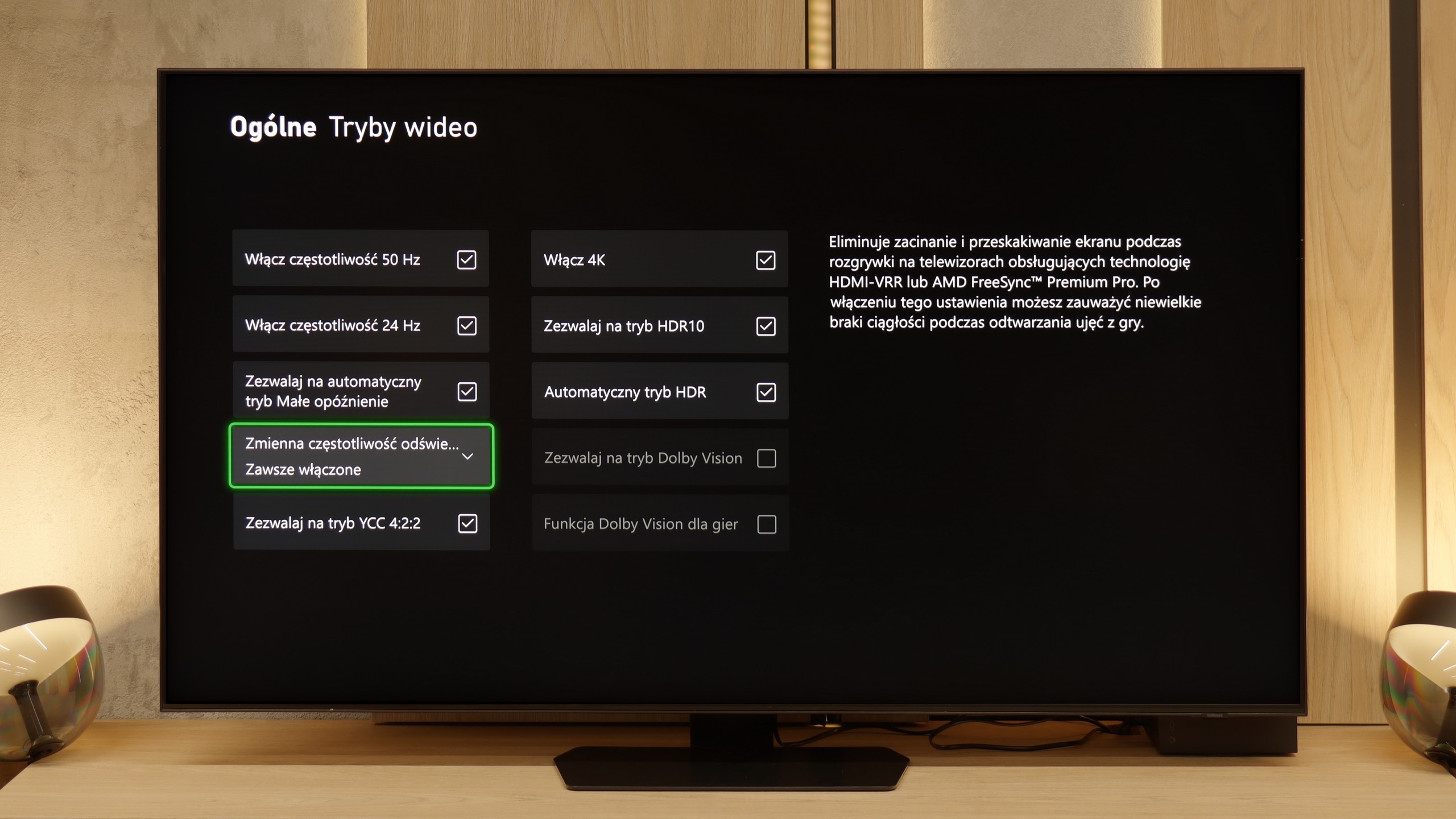

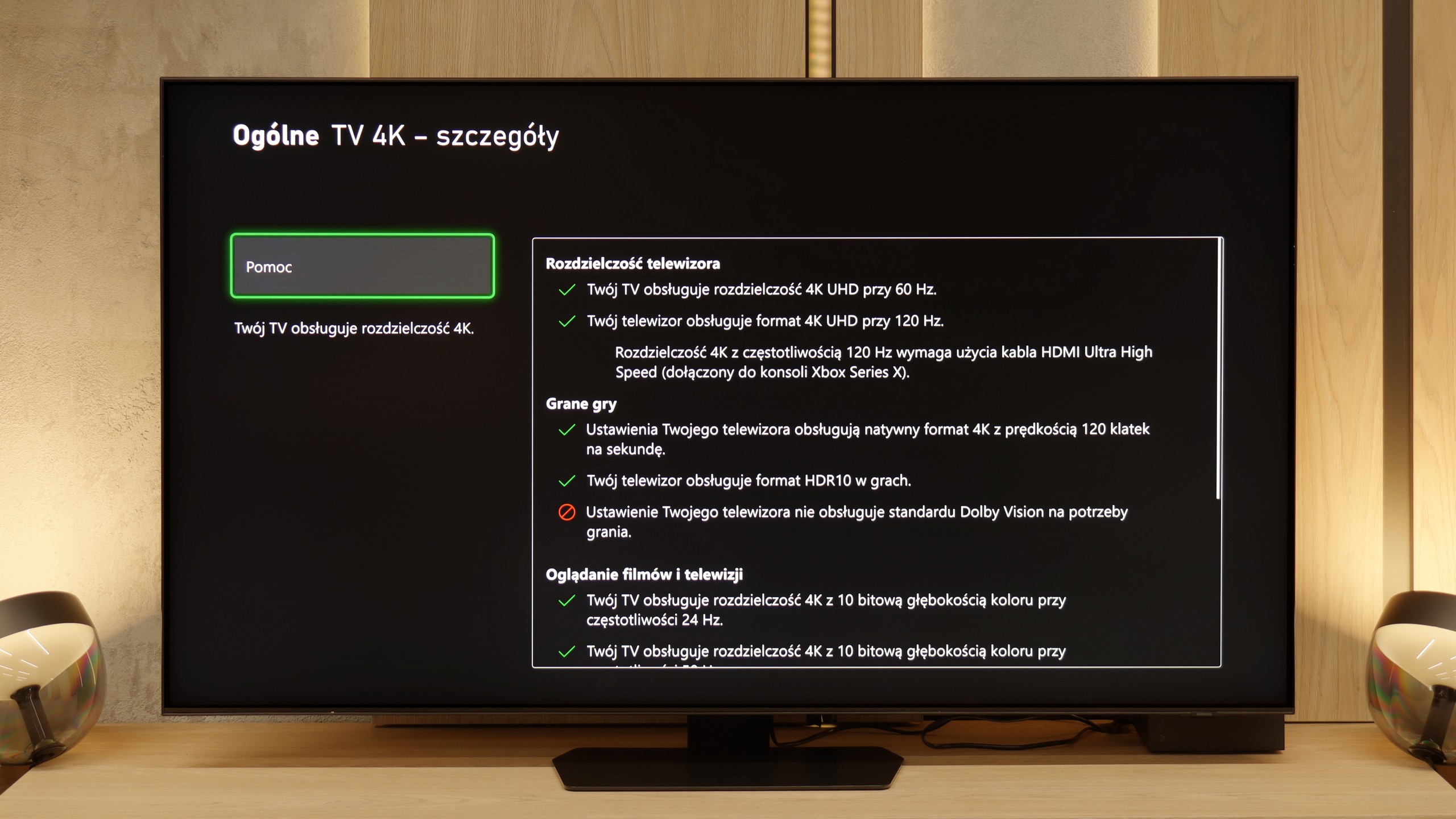

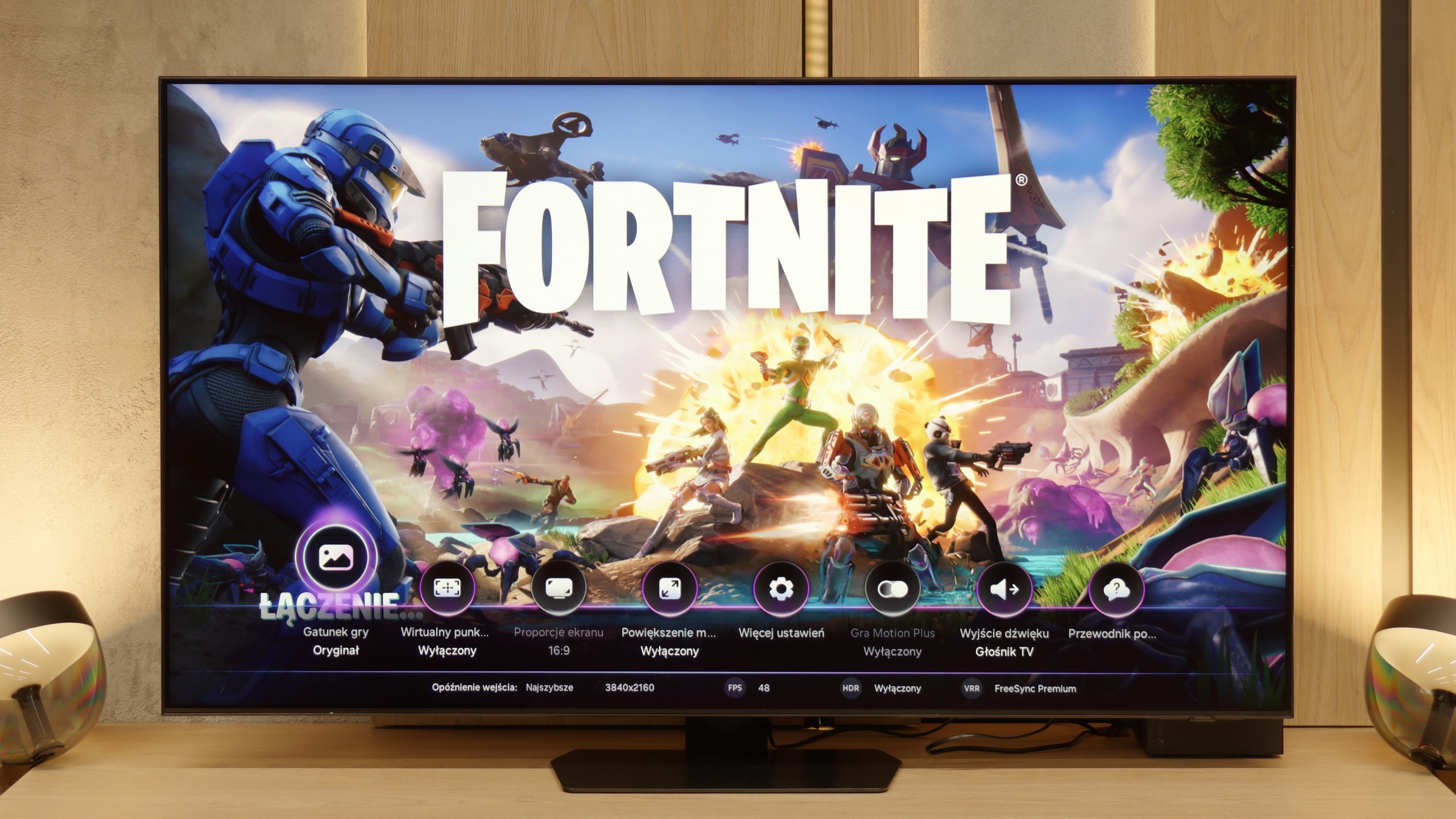

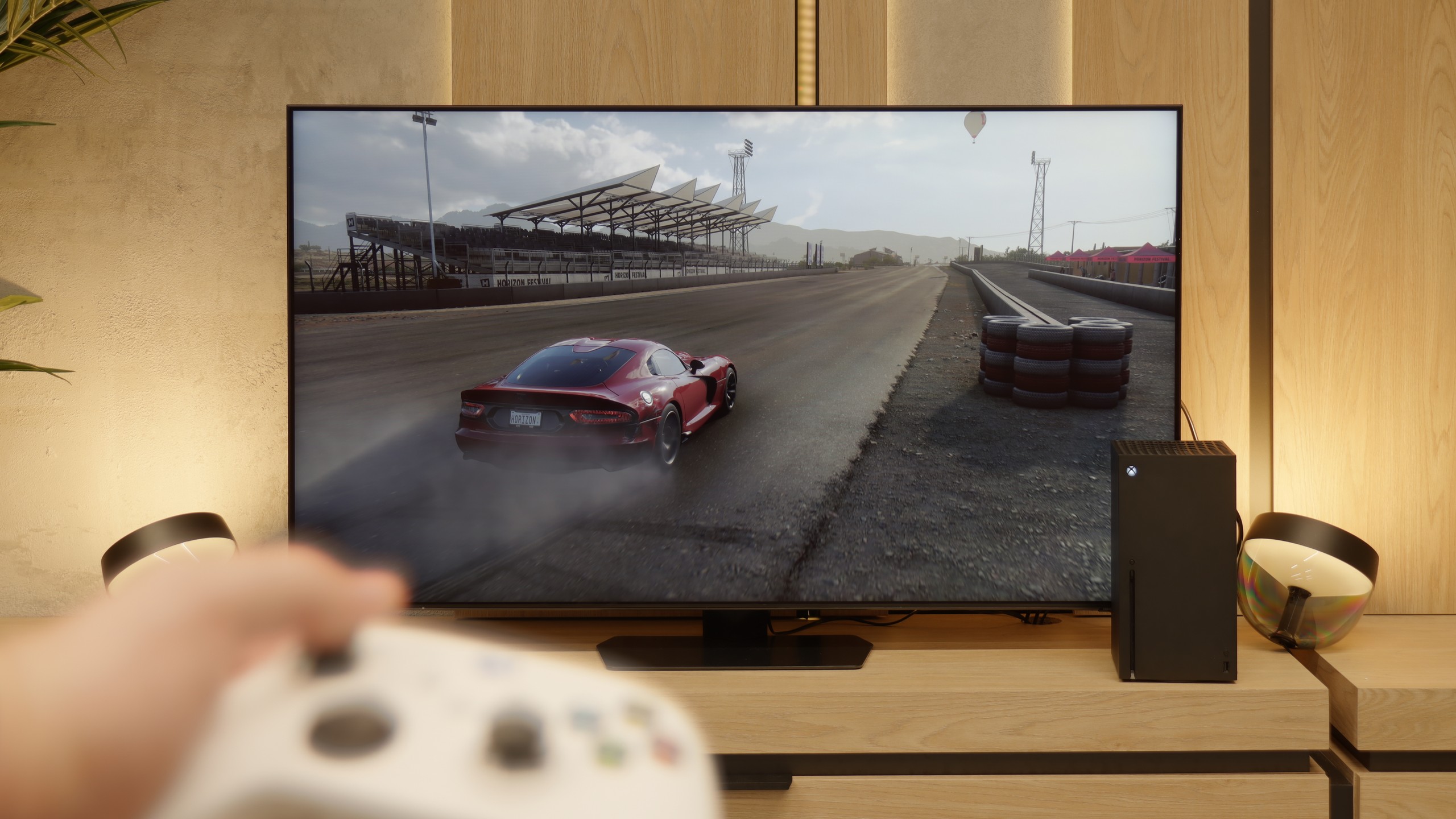
The Samsung QN92/QN90 TV is an outstanding choice for avid gamers and is highly recommended. This model provides virtually every gaming feature currently available, enhancing the excitement of gameplay. A standout feature is the 120 Hz panel, delivering impressive motion smoothness, which is especially beneficial during action-packed games. The TV also boasts low input lag, ensuring quick responses to player commands. Additionally, VRR (Variable Refresh Rate) and ALLM (Auto Low Latency Mode) optimise refresh rates and automatically activate gaming mode, further elevating the gaming experience. An additional bonus is the Xbox app, enabling users to play directly on the TV without needing a console—an exclusive feature in Samsung TVs, adding to their appeal in the gaming world.
Samsung’s Auto Motion Plus Game feature deserves particular praise. This motion smoother is highly effective in gaming, making lower frame rates appear smoother—30 frames per second can look like 45, and 60 Hz can resemble 90 Hz. Crucially, it achieves this without introducing noticeable input lag (keeping it below 25 ms), so gameplay remains highly responsive, unlike many other motion-smoothing options on the market. As a result, players can enjoy a smoother visual experience without sacrificing responsiveness.
QN90F has almost everything to become the perfect television for gamers. Things like four HDMI ports, VRR, ALLM, and a refresh rate of up to 165 Hz don't need to be reminded to anyone. It deserves high praise for the Game Motion Plus mode, which is a proprietary motion smoothing feature for games. Thanks to this, you can add a few “artificial” frames and make the image generated from the console look smoother than it should. This is a very unique solution in the world of televisions – competitive systems usually do not offer this – and that's why Samsung has had a strong bargaining chip among gamers for years, even despite the lack of support for the still niche Dolby Vision in games.
So why are we writing about a “nearly” perfect screen? Unfortunately, like in the latest Samsung models, we noticed a problem with the lack of HGiG support. This is a solution that allows the television to leave the control of tone mapping to the console so that games look exactly as the creators intended. Worse, this feature was previously present and disappeared after software updates. Instead of minor improvements, we got a step back. It's a pity, because without this shortcoming, the QN90F could truly be the perfect choice for gamers in the miniLED category.
Input lag
9.9/10
9.6/10
SDR
HDR
Dolby Vision
Input lag is a crucial factor for gamers, and the Samsung QN90D excels in this area. With input lag values below 13 ms, the delay between pressing a controller button and the on-screen response is minimal. This low value ensures smooth and responsive gameplay, satisfying both casual gamers and professionals, for whom every millisecond counts. As a result, the Samsung QN92D stands out as an excellent choice for those who prioritise precision and speed in their gaming experience.
The input lag on the QN90F is very low. For 120 Hz content, it is around 10–12 ms, and at 60 Hz, it drops below 20 ms. These are values that can confidently be called exemplary. The slightly higher input lag – by 1–2 ms – is due to the fact that the lowest latencies, below 10 ms, are reserved for the 165 Hz mode. However, regardless of resolution or refresh rate, you can count on the QN90F always responding quickly and responsively to our movements on the gamepad or keyboard and mouse.
Compatibility with PC
8.6/10
8.8/10

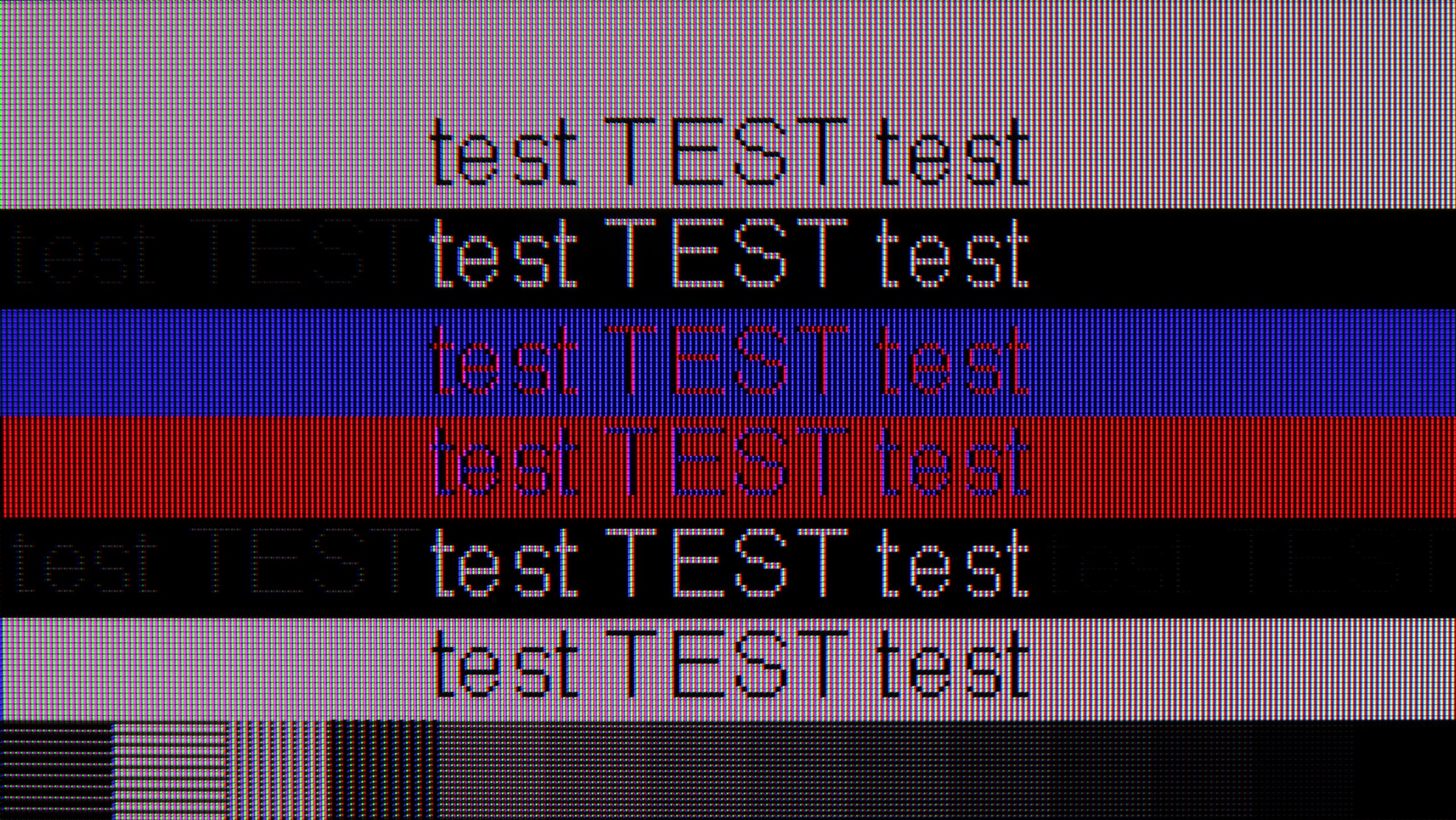
The television stands out for its high performance, supporting chroma 4:4:4 and offering exceptionally low input lag. These features allow users to enjoy fluidity and responsiveness, making it an excellent choice for office work and everyday applications. However, one notable drawback is the poor visibility of horizontal lines on a dark background. On the test pattern on the right, letters appear more like vertical lines, which can be frustrating for some users. Nevertheless, the TV generally works well with computers, providing comfort in performing daily tasks. It is also worth mentioning in this paragraph the "Remote PC" feature, thanks to Microsoft's collaboration with the Korean giant, we can seamlessly pair Windows PCs and use Office 360 applications.
Collaboration with a PC is another strong point of the QN90F. It’s a screen that works well for both work and gaming. This makes sense especially in smaller sizes, e.g., 43 inches, where the television can easily fit on a desk. The 165 Hz mode, primarily intended for PC gamers, supports technologies such as G-Sync and AMD FreeSync Premium Pro, so gameplay is smooth and very responsive. Office work performs just as well – font readability is high due to proper chroma handling. However, we noticed that switching the refresh rate from 165 Hz to 120 Hz significantly improves the readability of very dark text and thin lines. Therefore, if someone wants to use the QN90F as a monitor for work, it's worth considering the 120 Hz mode.
Viewing angles
7.1/10
3.6/10
With VA panel TVs, limited viewing angles are typically expected; however, the Samsung QN90D excels in this area. Thanks to its special coating designed to expand viewing angles, this TV delivers impressive performance rarely seen in devices with VA panels. While VA panels generally fall short in this regard, the QN90D maintains clear and vivid picture quality even when viewed from the side. This makes it an excellent choice for larger rooms and group viewing situations.
The viewing angles on the QN90F are rather average and typical for LCD screens with VA panels. It's a bit of a shame that Samsung opted out of additional coatings to widen the viewing angles in this model – likely at the cost of using a matte panel. The effect is that with a greater deviation from the center, the drop in brightness is quite significant, and colors lose their intensity. This is a compromise that must be considered when choosing a screen with a classic VA panel.
TV efficiency during daytime
6.4/10
7.2/10

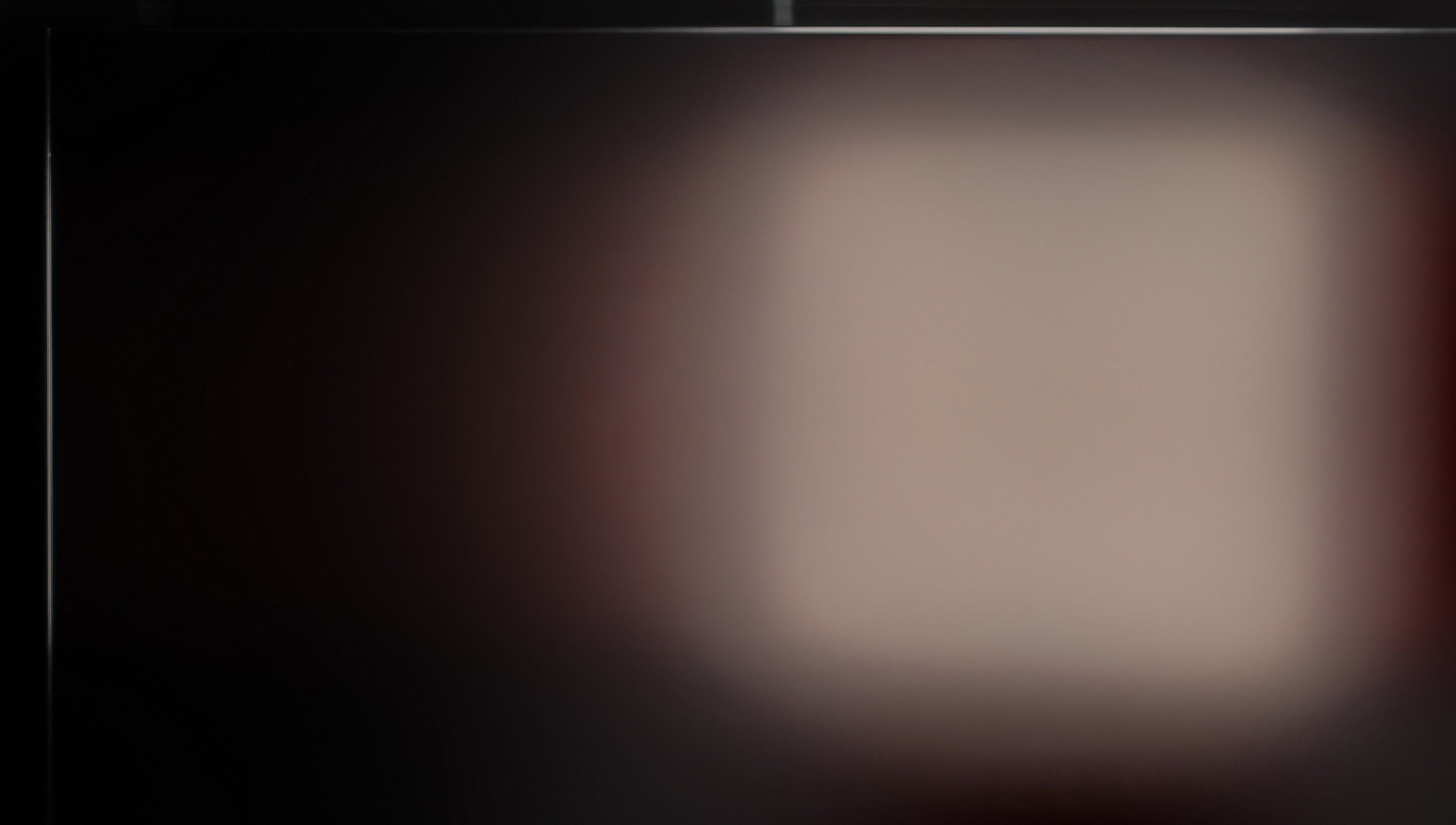


Matrix brightness
Average luminance SDR
Samsung QN90F / QN92F: 665 cd/m2
Samsung Neo QLED QN90D / QN92D: 629 cd/m2
The TV performs excellently in bright rooms thanks to its high brightness, especially when watching standard television. A constant brightness level of 600 nits ensures excellent visibility even in intense daylight. Unfortunately, despite a satin coating, handling reflections is average, which may affect viewing comfort. An additional downside is the matrix that improves viewing angles, which causes sunlight reflections to spread vertically, potentially further reducing viewing comfort in a bright environment.
QN90F is the first Neo QLED 4K with a matte display, and it must be admitted that this change is immediately noticeable. During the day, the screen behaves completely differently than typical LCD televisions – reflections are heavily suppressed, glares almost disappear, so there is no need to constantly cover the windows or fuss with furniture placement. Colors in a bright room look natural, although their intensity can slightly decrease under very strong lighting. However, this is not something that significantly ruins the viewing experience – rather a small price to pay for the comfort of watching in sunlight. Additionally, the average SDR brightness of around 700 nits makes the television easily "cut through" even in very sunny living rooms. It's hard to give a better recommendation: if someone is looking for a miniLED 4K television that can handle a heavily sunlit living room, the QN90F is one of the most reliable choices.
Details about the matrix
Subpixel Structure:

Panel uniformity and thermal imaging:

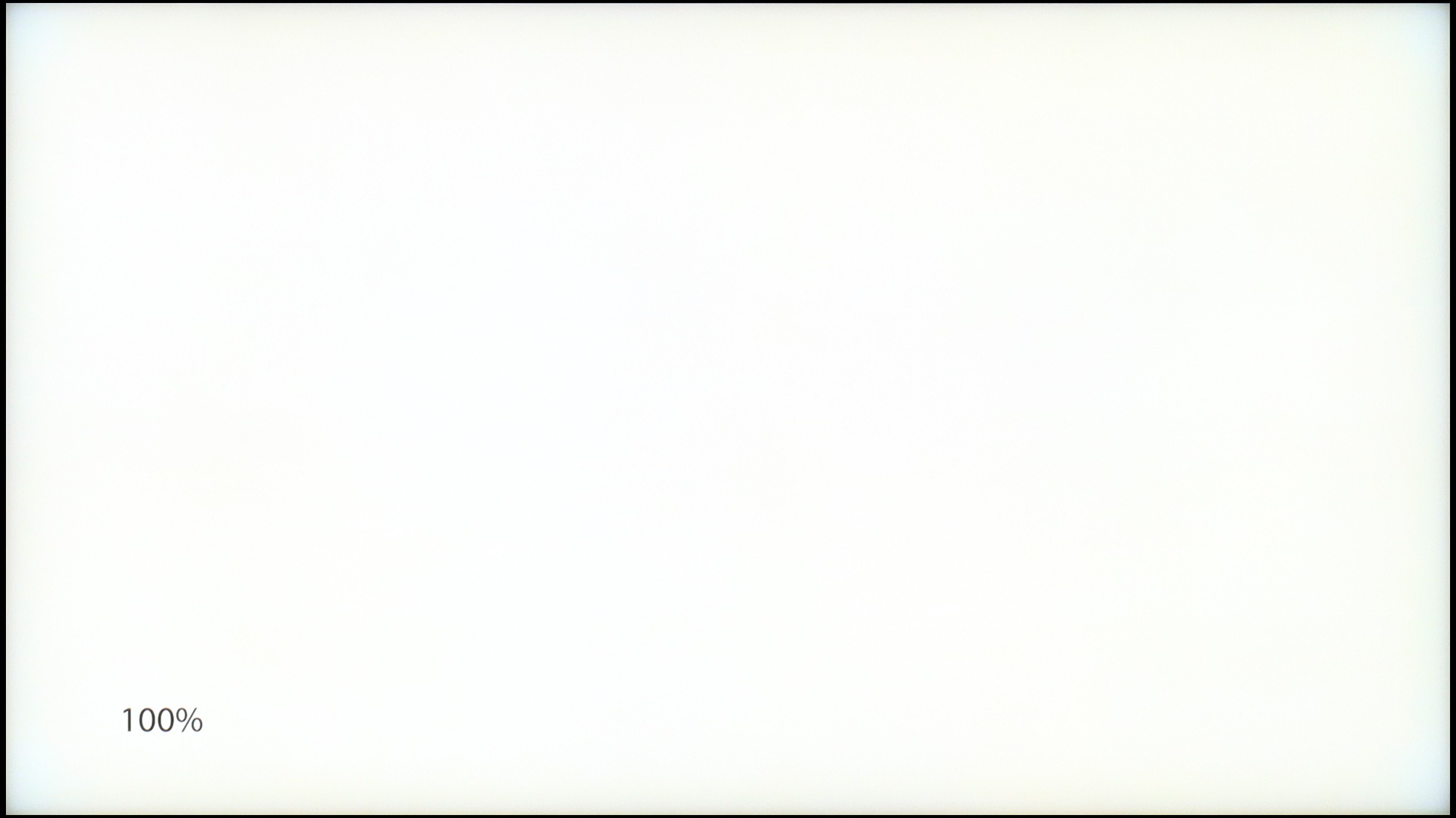
Samsung Neo QLED QN90D / QN92D
Samsung QN90F / QN92F
TV features
7.4/10
7.7/10
- HDMI inputs0 x HDMI 2.0, 4 x HDMI 2.1 48Gbps0 x HDMI 2.0, 4 x HDMI 2.1 48Gbps
- OutputsToslink (Optical audio), eARC (HDMI), ARC (HDMI)Toslink (Optical audio), eARC (HDMI), ARC (HDMI)
- Network InterfacesWi-Fi 2.4GHz, Wi-Fi 5GHz, Ethernet (LAN) 100MbpsWi-Fi 2.4GHz, Wi-Fi 5GHz, Ethernet (LAN) 100Mbps
- TV receptionDVB-T, DVB-T2, DVB-S, DVB-S2, DVB-CDVB-T, DVB-T2, DVB-S, DVB-S2, DVB-C
Classic features:
- Recording to USB (terrestrial TV)
- Recording programming
- Picture in Picture (PiP)
- RF remote control (no need to aim at the screen)
- Backlit remote control
- Teletext
- Audio only mode
- Bluetooth headphones support
- Simultaneous Bluetooth headphones & TV audio
Smart features:
- AirPlay
- Screen mirroring (Windows Miracast)
- Voice search
- Voice search in native language
- Ability to connect a keyboard and mouse


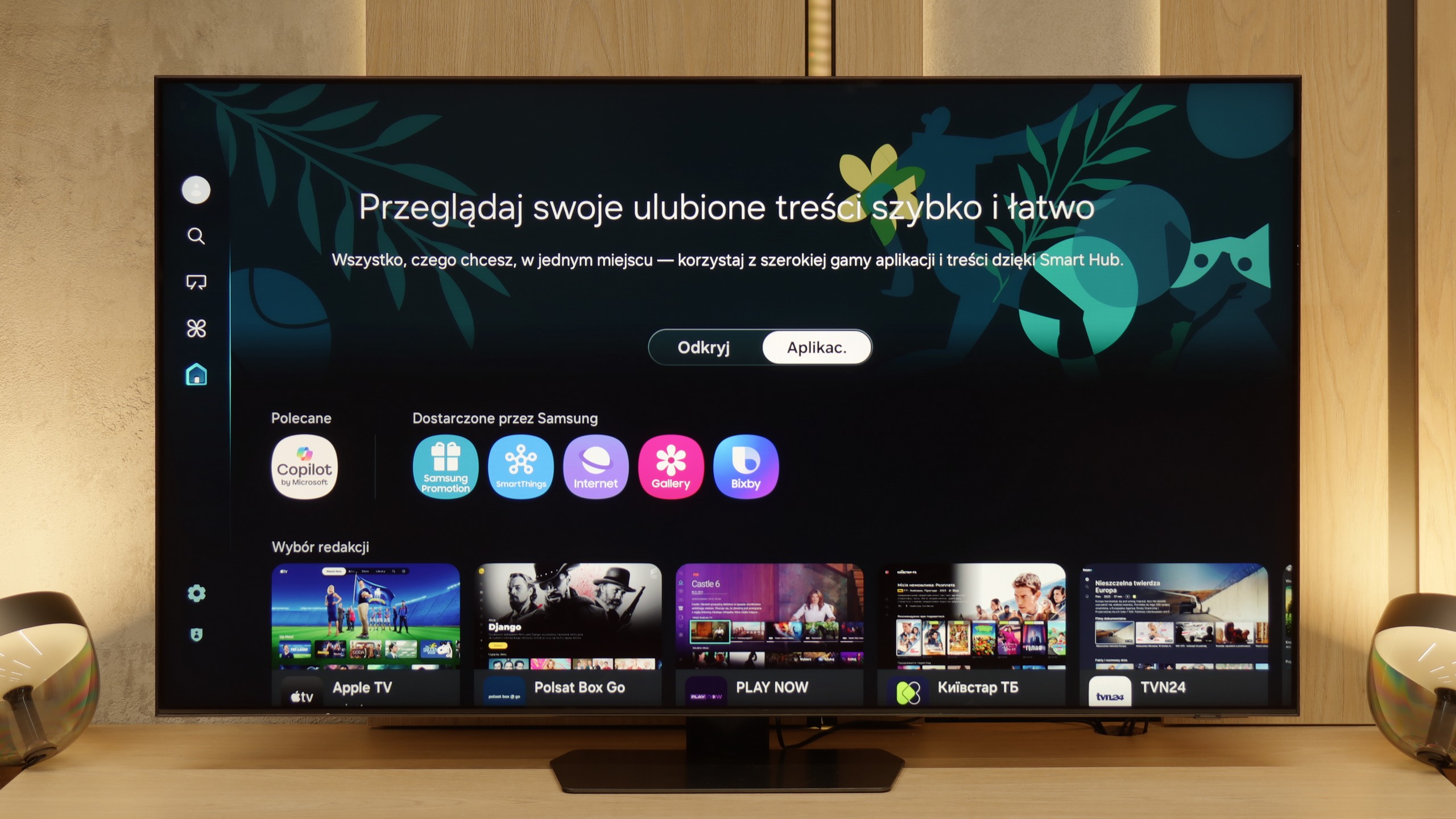
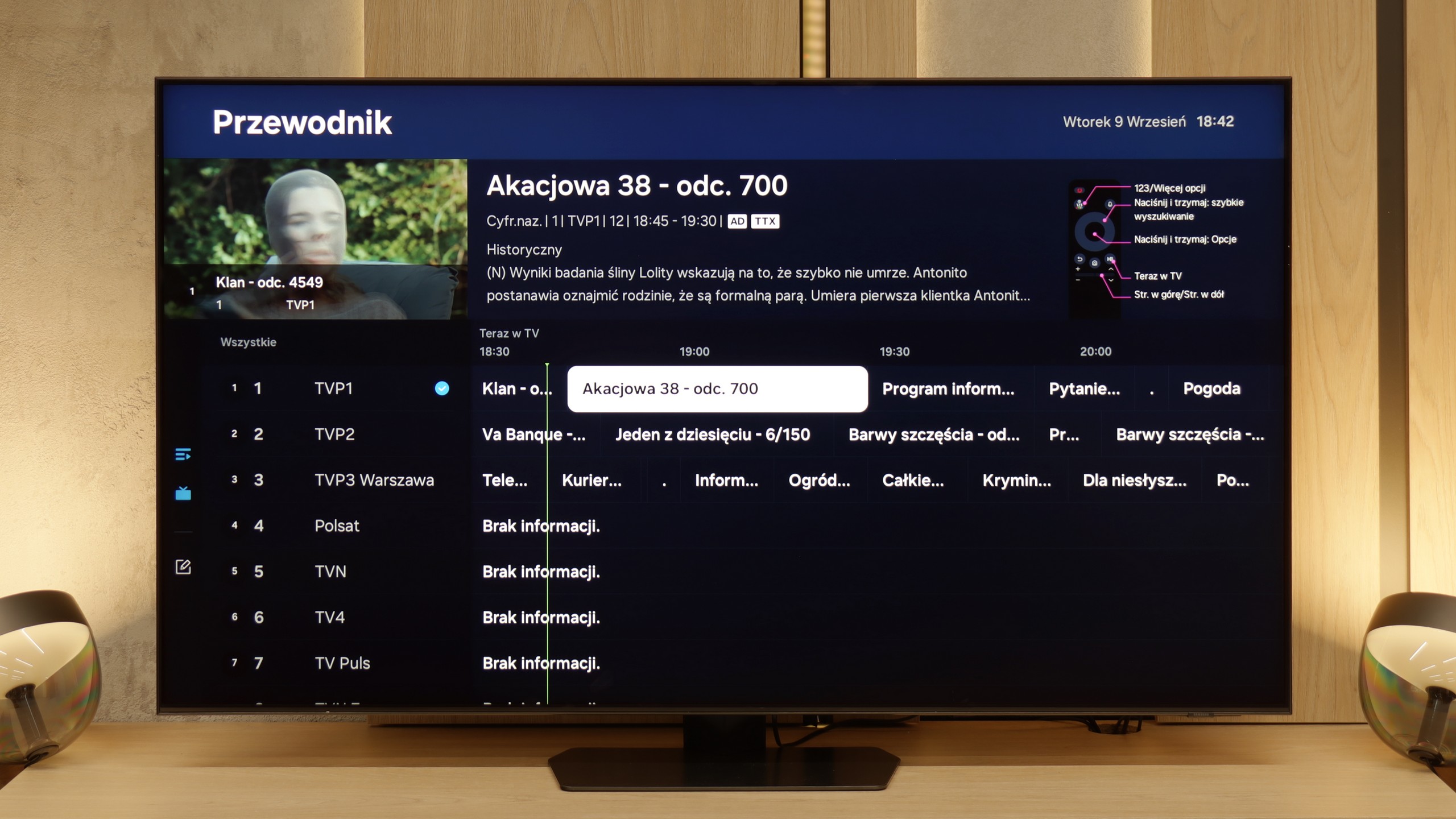
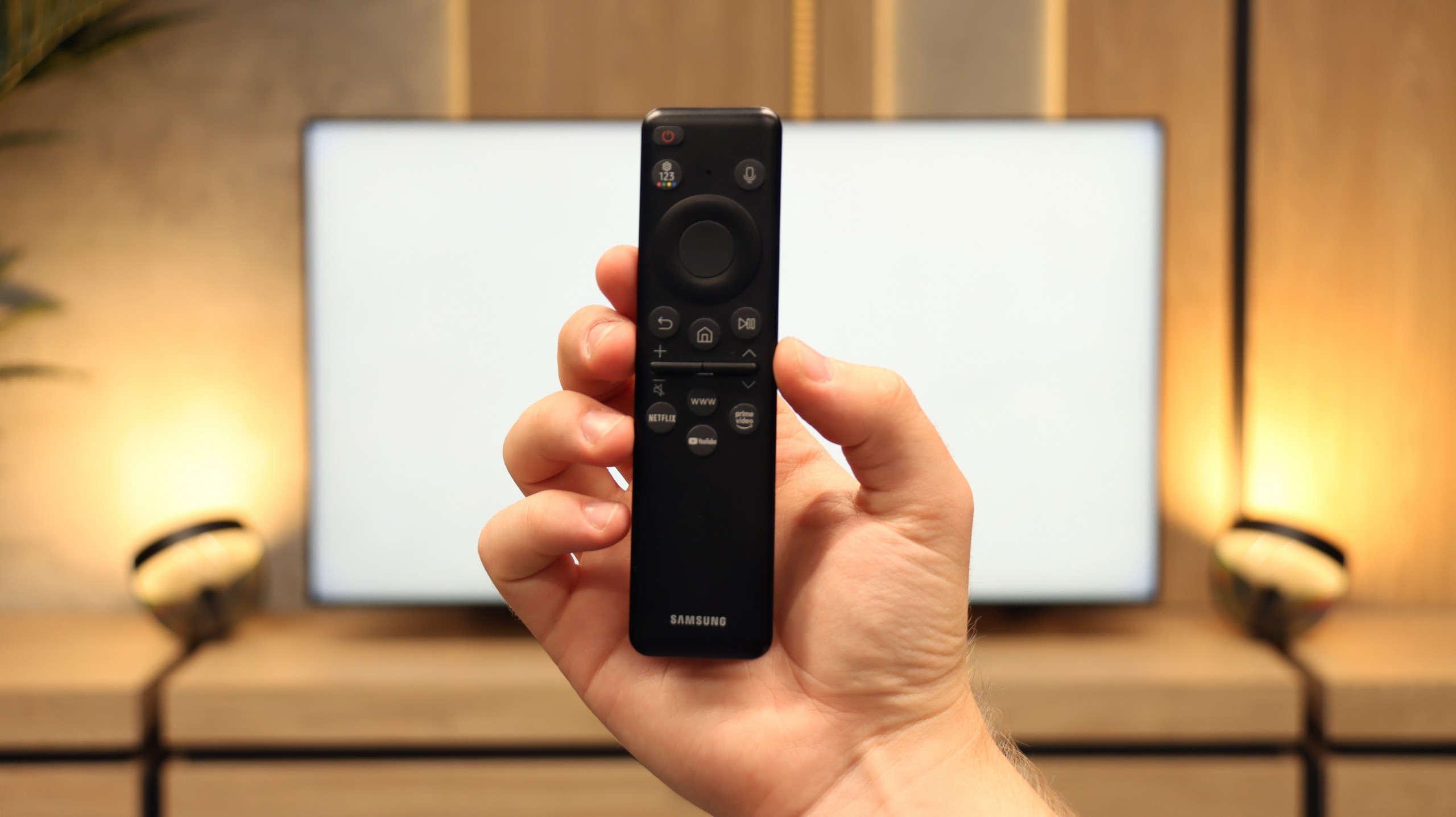
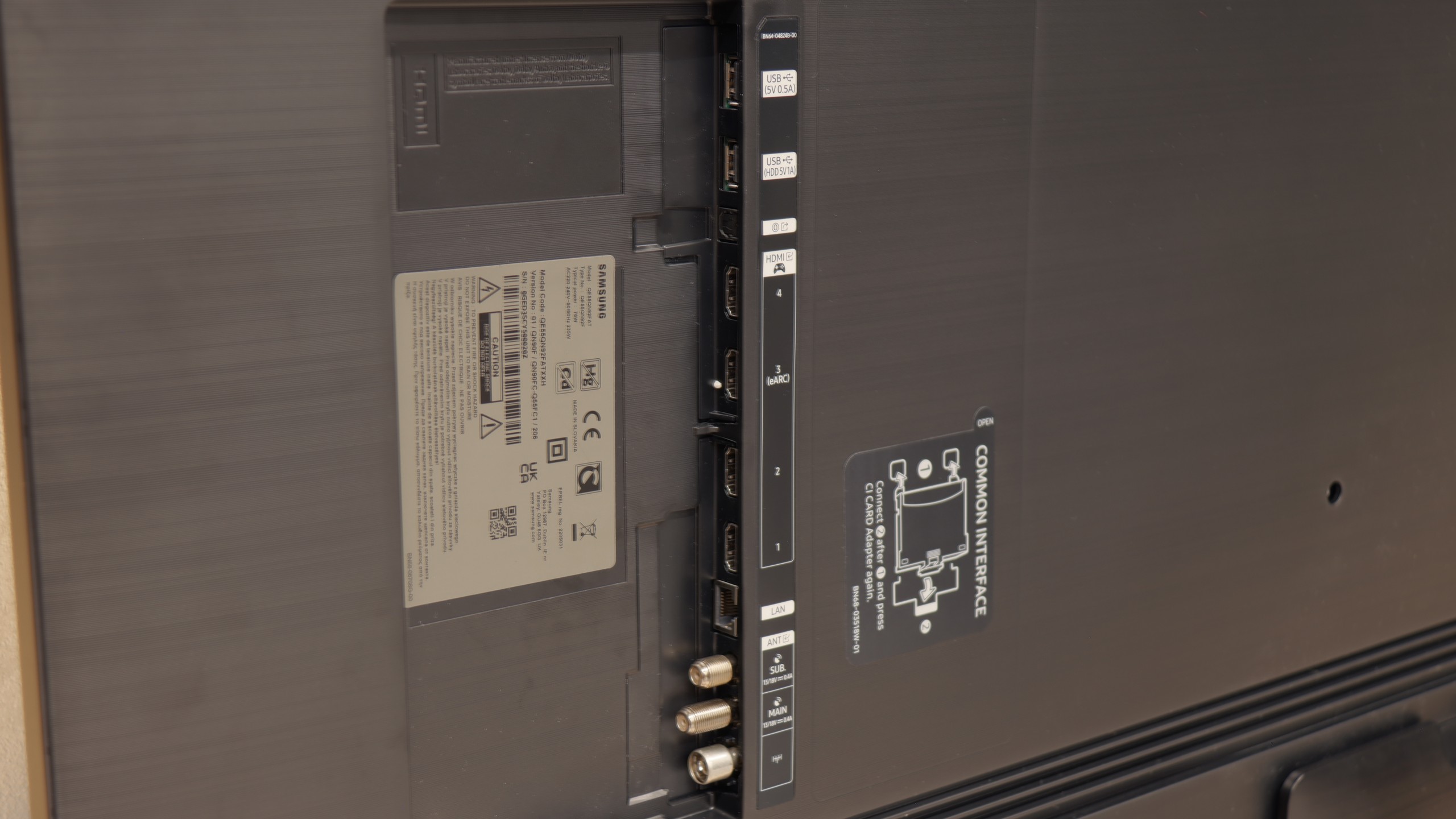
The Samsung QN92D TV impresses with its modern Tizen operating system, offering users a smooth, intuitive, and visually appealing experience. Tizen enables fast and seamless app browsing, enhancing overall ease of use. Its extensive ecosystem makes connecting the QN92D with other devices straightforward. Practical features like controlling set-top boxes with the remote eliminate the hassle of multiple remotes. Apple device users benefit from the AirPlay feature, enabling easy media streaming from an iPhone. Additionally, the remote PC function allows users to operate a computer on the big screen, and the Office 365 app makes the QN92D ideal for both work and entertainment.
Like many Samsung TVs, the QN92D includes an Ambient Mode feature, letting users personalize the display to blend with the surroundings. It can display images or information, making the TV an elegant part of the décor even when turned off. Speaking of aesthetics, the QN92D is notably slim, around 2 cm at its thickest point, with a premium-looking metal frame and a solid, included stand.
However, the QN92D may be slightly lacking for those watching traditional TV, as it doesn’t include a TV program recording feature on the Polish market. Nonetheless, it offers a PiP (Picture-in-Picture) function, allowing viewers to watch two programs simultaneously. The Samsung QN92D is a feature-rich TV that will appeal to gaming enthusiasts and multimedia users alike, seamlessly fitting into modern interiors.
Smart TV Features: Tizen
Samsung has been developing its Tizen system for years, and in the QN90F model, it is clear that it has reached a point where it is really hard to find fault. The system runs smoothly, responds quickly to commands, and does not lag with more demanding applications. If someone uses an iPhone – there is AirPlay and screen mirroring. If someone has an Android phone – there will be no problem either. Additionally, there is a voice assistant that understands commands in several languages, including Polish, so you can start a movie or change the channel without reaching for the remote. Interestingly, there is also integration with Microsoft's Coopilot and AI features, but SmartThings proves to be much more practical – thanks to it, the television can become the center of the home ecosystem, connecting not only Samsung devices but also, for example, Philips Hue light bulbs.
Classic Features
The QN90F can also function as a regular television. We can forget about recording to USB, but instead, we get PIP mode, or picture-in-picture – a function that is rarely seen today. Thanks to it, you can simultaneously follow a match and a series, which can save the evening in many households. Additionally, there is a clear EPG guide and a small remote that charges with light (so batteries are not needed) and can take control of the decoder, soundbar, or even a console. It may not be the most advanced on the market, but it proves to be simply convenient in everyday use.
Playing files from USB
9.1/10
9.1/10
Supported photo formats:
Maximum photo resolution:

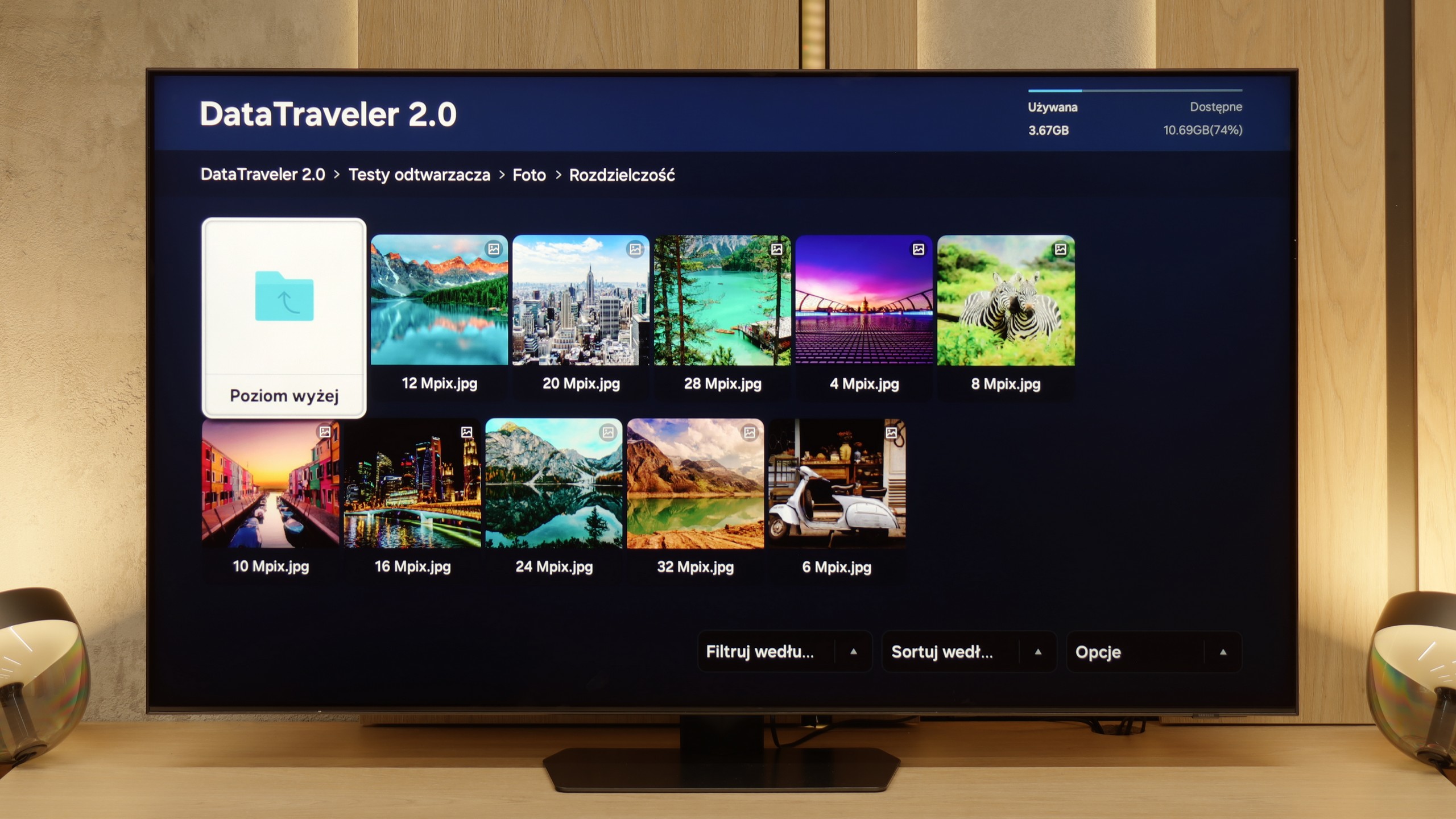
The built-in player in the Samsung QN90D should meet the needs of most users, as it smoothly plays the majority of popular video and audio formats. However, more discerning users may find a few limitations. Notably, it does not support HEIC photo format—a common format on Apple devices—nor does it accommodate several other, less widely used image formats.
The built-in media player in the QN90F performs quite well. It supports most popular audio and video formats and easily plays graphic files such as JPEG or PNG. The problem arises with files in the HEIC format – a type of high-quality photo standard used by iPhones. In theory, the television should support them, as they appear on the list of compatible formats, but in practice, attempting to open a HEIC file can freeze the entire system and necessitate a power reset. It's a rather strange situation and another small glitch that shouldn't occur in equipment of this class. On the other hand, one can be very satisfied because it supports most popular audio and video formats.
Apps
8.7/10
8.7/10














































Sound
6.9/10
7.8/10
- Maximum volume-86dB
- Dolby Digital Plus 7.1
- Dolby True HD 7.1
- Dolby Atmos in Dolby Digital Plus (JOC)
- Dolby Atmos in Dolby True HD
- DTS:X in DTS-HD MA
- DTS-HD Master Audio
The TV shares a similar speaker setup with the QN95, configured as a 4.2.2 system with a total output of 70W (except for the 50" model, which uses a 2.2 configuration, and the 43" model with a 2.0 setup). Despite its slim design, the TV delivers a loud, clear sound with a well-balanced audio profile. As with other Samsung models, the lack of DTS format support results in a slight deduction. Notably, it includes Samsung's proprietary Q-Symphony feature, enabling seamless sound synchronization with a compatible Samsung soundbar.
QN90F performs really well. Despite the slim design of the TV, there's a slight bass that adds depth to the sound. The speaker system works in a 4.2.2 configuration and offers a total power of 60 W – for built-in audio, this is quite a solid result. Moreover, with materials that support Dolby Atmos, one can experience a subtle spatial effect, which works quite well for everyday viewing. Of course, with equipment of this class, it's hard not to recommend an additional soundbar. It is best to choose one that supports Q-Symphony technology – thanks to this, the TV and soundbar play simultaneously, resulting in a fuller and definitely more cinematic experience.
Acoustic Measurements
No acoustic data
86dBC (Max)
75dBC
